A collection of inspiration for a life well lived
THE LUBERON


WHAT’S INSIDE
A collection of pottery, art, market finds, flowers, antique linen and other finds that represent the delights of the south of France.
Explore the delights of the Luberon, from the winding cobblestone lanes of ancient hill towns to village markets.
90-99
Visit the hilltop town of Roussillon, renowned for its red earth from ochre mines. The village attracts artists like bees to a hive.
Regis Péan and David Varon of Domaine Les Martins
Sophie’s Roasted Citrus Chicken
NOTE FROM JONNA
More than two decades ago, our young family toured the French countryside. I had enjoyed reading Peter Mayle’s delightful book, A Year In Provence, and yearned to see what all the hype was about.
I had a penchant for Provençal textiles (do you remember Pierre Deux?) and longed to see where they originated. In the Luberon, we navigated the narrow winding lanes of ancient hill towns, awed by the beauty of the aged limestone homes and castles. We succumbed to pottery, painted in hues of the landscape, and my husband hauled suitcases FULL of it from France, through Spain and New York, back to our home in Hong Kong. We breathed air scented with lavender and cypress trees.
I have returned twice recently, once with my middle daughter, now grown and near-fluent in French, as well as a decadent visit alone. The region is still peaceful and even lovelier than I remembered. There is a sense of timelessness, with most structures having stood for many centuries; yet one is inclined to luxuriate in the present moment.
My hope is to paint a picture of this alluring land that you will want to visit and surrender to its seductive charms. J’espère que vous l’apprécierez!




Clambering up a cobblestone lane to the top of a hilltop village, I feel intoxicated by the delicious scent of climbing jasmine. I am fortunate enough to be here in Provence during the small window in late spring when it is in bloom and the flowers grow profusely. Sunset yellow roses climb an azure blue shutter, joining the jasmine in flaunting their beauty. The village church bells ring and the birds chime in. I browse the weekly village market, tables spilling over with freshly picked strawberries, apricots, sausages, creamy cheese, olives and baguettes. I fill my basket with these edible treasures and head to my car. As I drive along a country road, window down and wind in my hair, I am stopped in my tracks at the sight of a scarlet field of poppies. It is an idyllic place to lay out a picnic and savor the market delicacies under the warmth of the Provençal sun. My senses are full on this perfect day in the Luberon.


Provence, in the south of France, is known and loved a small pocket north of Aix-en-Provence and east of south just below the Petit and Grand Luberon range. Provence). It is also protected as the Luberon Regional Network of Biosphere
The landscape, which has inspired impressionist painting
Ancient olive groves are punctuated by soaring cypress ripening grapes. Lavender fields, with row upon row but not quite ready to reveal their full glory. The Luberon crowned with chateaus and churches. The key is to

loved by many. Tucked inside this region is the Luberon, of Avignon, from the Vaucluse mountains extending This area is known as the Coeur de Provence (heart of Regional Natural Park and part of the UNESCO International Biosphere Reserves.

inspired artists over the centuries, is an painting come to life.
cypress trees, and vineyards are laden with slowly row of the famed flowers, are gradually turning color, Luberon is dotted with photogenic ancient hill towns, to slow down, explore and savor the sensory feast.




VILLAGES


There are quite a few villages scattered about the Luberon. These are a handful of my favorites.
APT
Apt is a large, bustling town, known for candied fruit and a history dating to Roman times. Romans built the first road in France in Apt, which linked Italy to Spain. Wander through town to soak up Apt’s lively atmosphere, and hit the market if you are here on the weekend.
EAT
Les Valseuses
This welcoming French and Japanese fusion cafe is open for breakfast and lunch only, and offers both a tasty vegetarian or meat option. The menu changes daily. The day I enjoyed lunch here ramen with pork and pumpkin tart with Gorgonzola were on the menu. Fresh, flavorful and fabulous! The atmospheric interior is colorful and artsy. Outdoor dining is offered as well.
Address: 26 Place du Septier
Les Valseuses
SHOP
Atelier Buisson-Kessler
A ceramic shop, including a tempting array of cups, carafes and much more in every hue of the rainbow. Locally made.
Address:
17 Place du Septier
Atelier Buisson-Kessler
Market day is Saturday. It is a rather large, sprawling market (the largest in the Luberon) and spread among several streets. There is sometimes live music and several shops to poke. Wander through town to soak up Apt’s lively atmosphere.




GORDES

Cascading down the hillside, overlooking the Luberon Valley, Gordes is perfectly gorgeous… a gem in the region’s crown. It’s hard to imagine its residents, throughout history, have survived the plague, earthquakes, medieval invasions, bombings, and supported resistance fighters during World War II. In 1948 Gordes received the “Croix de Guerre” medal for being one of the most active centers of German Resistance during the occupation. Artist Marc Chagall and his wife called Gordes home for a period, prior to escaping the war and emigrating to the US. In the 1950’s-60’s Gordes attracted artists, and an artistic vibe permeated the village. It is a delight to meander through the maze of cobbled lanes, admiring the beauty at every turn. There are a number of great restaurants, hotels and a vast number of lovely holiday homes to rent, both in the village and its surroundings.
Sénanque Abbey is a short drive away, in a narrow valley on the other side of the hill. with its famous lavender field, and worth a visit by guided tour. The abbey, built of limestone in the Romanesque style, dates from the 12th century. It has been occupied by Cistercian monks since that time, other than a brief period in the 1920’s. Monks earn their income by selling lavender and honey
EAT

Le Mas
In the valley below the hilltop village of Gordes, this absolute gem is housed in an 1860’s Provençal farmhouse on what used to be a silkworm farm. Chef Alexis Osmont and his wife, Alexandra, are transplants to the Luberon from Normandy and live upstairs with their children. The grounds are lovely, and if the weather is fine you can dine outside. Indoors is very cozy and one feels as if dining at the home of friends, with candlelight aglow and a resident dog or cat wandering through to collect a scrap or a scratch. The food is marvelous. Osmont’s piquant dish of mussels from Normandy was the most exquisite I’ve ever tasted, silky and bursting with flavor. The guinea fowl was tender and toothsome. I loved the decadent dessert, rice pudding made the old-fashioned Norman way with fruit and salted caramel ice cream. Upon leaving the restaurant, they were kind enough to squeeze me in for a reservation another evening during my stay, as I simply knew I must return for more!
Address:
185 Chemin du Tourteron, Les Imberts
Le Mas

La Trinquette
Located at the top of the village, this very popular French and Mediterranean restaurant produces beautifully plated meals and delivers them to the table fairly quickly. The sea bass is a winner, served very fresh and flavorful with herbs and vegetables. The buttery whipped potatoes are fabulously creamy.

Address:
Rue des Tracapelles
La Trinquette
La Bastide de Pierres
Also perched at the top of the village sits this traditional Italian restaurant, in operation since 1820. Dine on the pergola-enclosed terrace or the charming, art-filled interior and enjoy tasty pasta dishes (we recommend the delicious carbonara, which is served in a small copper pot) and pizza.
Address: 63 Place du Château La Bastide de Pierres

SHOP
Souleo È Provence
A wide selection of handmade pottery from local clay, which is then hand painted in designs characteristic of Provence. I still have my collection of this same pottery we lugged from Provence around the world to our home in Hong Kong more than 20 years ago.

Address:
45 Rue de la Poste
Market day is Tuesday. Arrive early, as loads of tourists will undoubtedly make their way up the hill to partake of this bustling market.
STAY
Domaine les Martins
Set in the glorious valley below Gordes, this tranquil guesthouse is set amongst a heavenly garden… olive trees, stone walls covered in climbing jasmine, fragrant lavender and roses, lawns, dreamy swimming pool, bicycles for guests to explore and more. Upon arrival, one is warmly greeted by Regis or David and made to feel at home, as they would treat a friend or family member. Read “The Art of Hospitality” to learn more about this enchanting place to stay when visiting the Luberon.
 Domaine Les Martins
Domaine Les Martins
L’ISLE SUR LA SORGUE
The river Sorgue, with its clear emerald water, runs through this pretty village, branching off into canals and tributaries. Waterwheels are still present, remnants of the 16th to 19th centuries, when this town operated as a center for silk, wool and paper manufacturing. Sunday mornings the town is a hive of action at the wonderful antique market, when dealers set up their wares along the canals. There are innumerable antique shops throughout town as well. Parking is a challenge, but I highly recommend going early and braving the crowds. There are loads of treasures waiting to be found! I still regret not buying the antique child’s Madeline-style hat and some of the vintage Majolica pottery I fell in love with. Ugh… the frustration of luggage constraints!
There are loads of treasures to be found… lovely antique monogrammed linens, crisp white nightgowns and children’s frocks, old copper pots and pottery, mirrors, art work, antique garden chairs and much more.









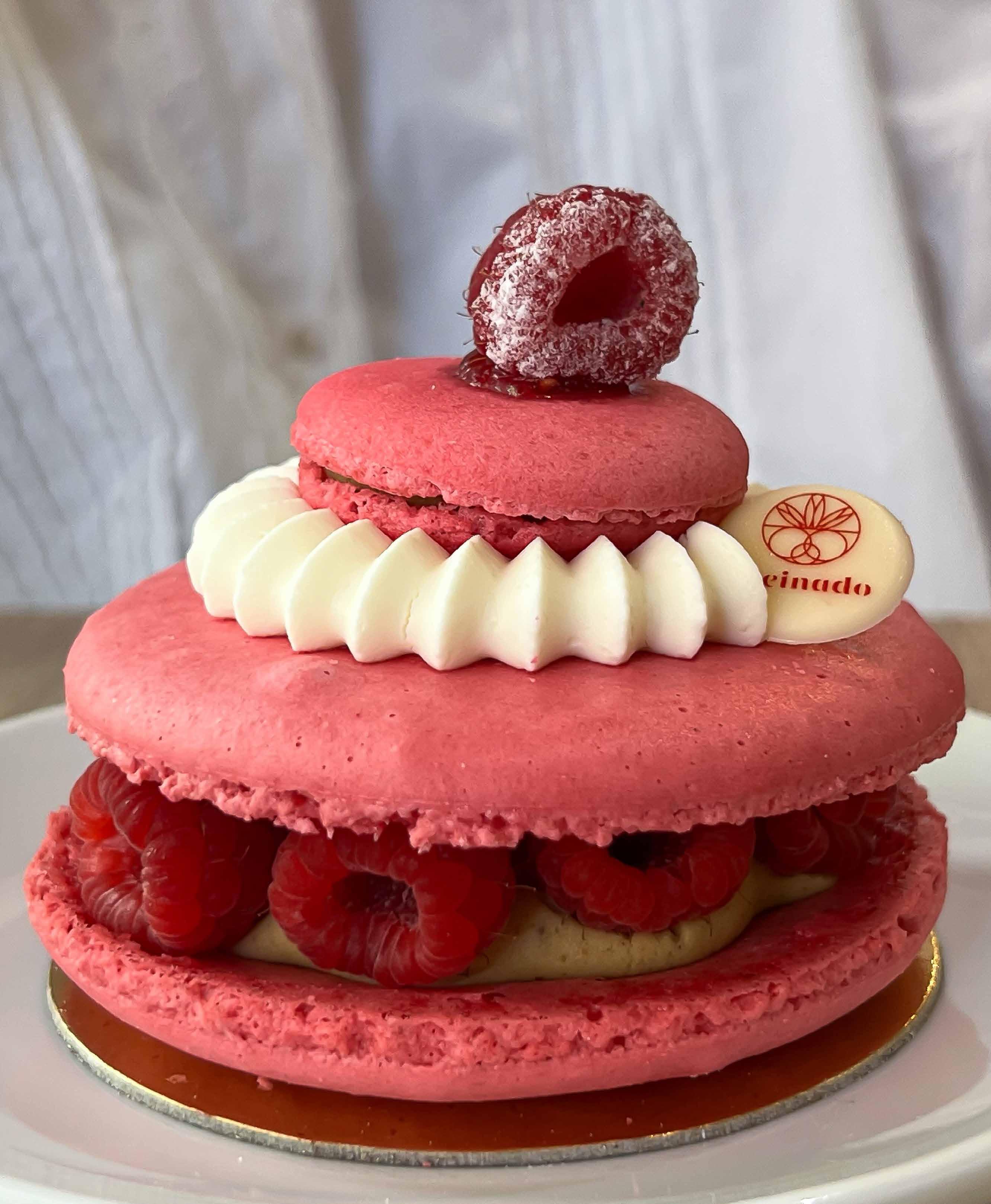
EAT
L’Atelier du Jardin
This is a perfect spot for lunch after spending the morning perusing the delightful Sunday market. You can dine in the garden or indoors at a communal table. The plat du jour is a good bet. Mine was a delicate little chicken pot pie in a puff pastry bowl with a lid to match.
Address:
7 Ave des Quatre Otages
L’Atelier du Jardin
Maison Meinado
A combined boulangerie, pâtisserie and bistro, this makes for a nice stop for a delicious pastry or sandwich while browsing for antiques.
Address:
91 Ave Julien Guigue
Maison Meinado
Market days, in addition to the large antique market on Sunday, include a smaller Provençal market on Thursdays and a book market on the last Sunday of the month.

ROUSSILLON
This stunning village is one of the most famous towns in the Luberon, known for the brilliant ochre quarries nearby. The village is perched on the edge of a red cliff, and buildings glow in shades of mustard, rouge, apricot. Read Inspired By Nature for more about Roussillon. ------ hyperlink to correct section ----
SHOP
Boutique Cricri
This art shop creates homemade watercolor paints in a rainbow of hues. The pigments are sold in powder form and they also sell ready-to-use caked palettes. The shop also sells a selection of ceramics.
Address:
31 Rue Richard Casteau
Boutique Cricri
Atelier Marchande de Couleurs
A vibrant shop brimming with ceramics, as well as baskets, textiles, pottery and more.
Address: Rue Richard Casteau
Atelier Marchande de Couleurs
Market day in Roussillon is Thursday. Go early before the tourist buses arrive and the hordes of people descend on the village!



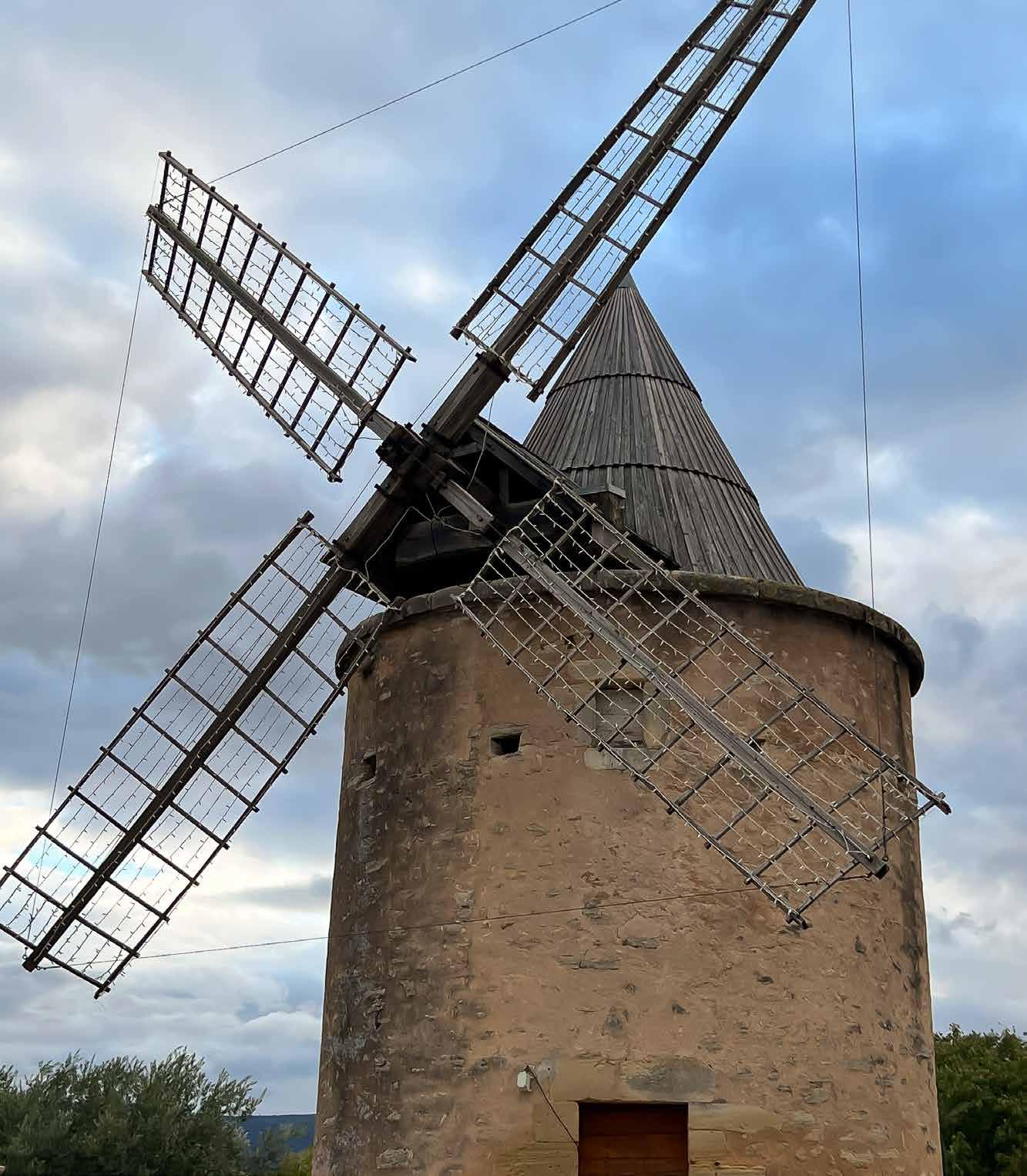

GOULT
implored me. I met her and her husband at dinner one evening. They have been coming to Goult for 20 years, and finally bought a home here 8 years ago.
This peaceful and picturesque hilltop village, about 20 minutes from Gordes, feels under the radar, as opposed to Gordes and Roussillon, which draw tourists like bees to a hive. A handful of excellent restaurants, The village consists of a handful of excellent restaurants, charming 16th century stone houses and attracts artists, many of whom have taken up residence. The town is a “living” village, meaning that it remains as it has always been, set up for the people who live there rather than as a tourist-focused village. Residents buy their daily goods at the boulangerie, fromagerie and the small market. I love wandering the lanes, admiring the pretty vignettes that abound, the vine-clad doorways and lovely, muted hues. The church, Eglise Saint-Sébastien, dates from the 13th century. At the top of the village sits a 17th-century windmill named Moulin de Jerusalem. Hiking trails lead from here to several surrounding villages, passing farms, vineyards and lavender fields along the way.
Shh! Don’t tell her I spilled the beans about Goult!
“Don’t tell anyone about Goult!” An English woman
Market day in Goult is Thursday. It is a smallish market and doesn’t draw nearly


nearly the crowds of the markets in Gordes and Roussillon, which is quite nice..


EAT
Le Carillon
Sitting on the main square, Le Carillon, a firm favorite, serves lunch and dinner, either indoors or outside. The beautiful Provençal-inspired cuisine has a contemporary flair. Vegetarian and gluten-free options are offered as well.
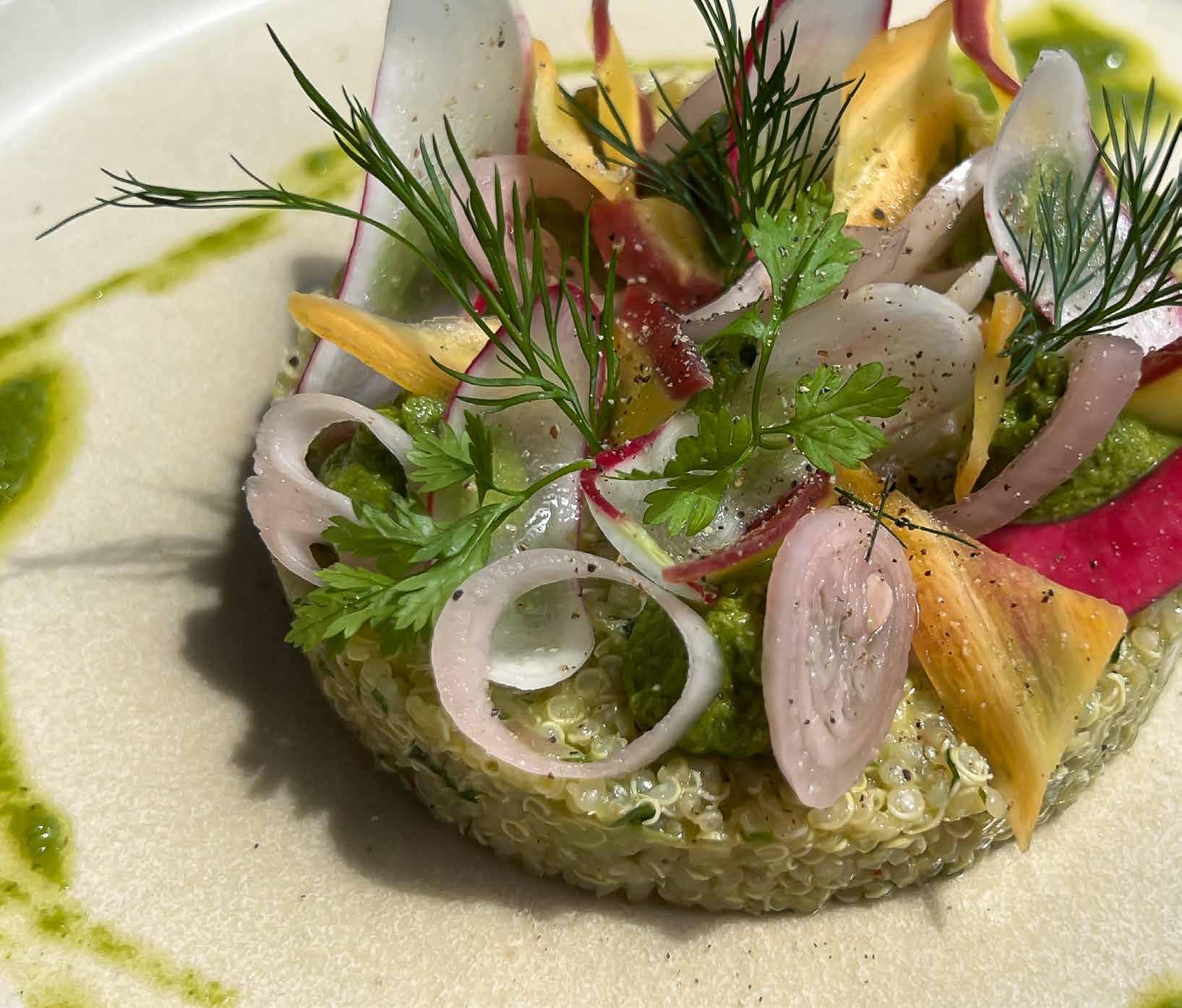
Address:
Rue de Cheval-Blanc
Le Carillon
La Bartavelle
Tucked into a small side street, the glowing warm wood interior and flickering candlelight beckons, creating a cozy and intimate ambience. This is a special dining experience. The food is truly delicious, and you must save room for dessert!

Address: 10 Ave de Luberon La Bartavelle
La Terrasse
This is a popular fixture in Goult, serving French and Mediterranean cuisine. It is a lovely spot to enjoy lunch or dinner. Request the terrace for lunch on a warm day.
Address:
200, Rue de la République
La Terrasse




OPPÈDE-LE-VIEUX
This intriguing village, constructed on the north slope of the Luberon mountain, was the site of wars and invasions for years. Villagers vacated and relocated in a new village below, closer to their farms. The area was abandoned for many years. During World War II, artists and writers started to fill some of the houses again, but the village still retains a somewhat half-empty feeling. Wear good walking shoes and climb up the steep, roughly cobbled path past houses carved of stone, which feel lost in time. At the top sits a beautifully preserved Romanesque church, built in the 13th century and rebuilt in the 16th, along with the ruins of a 13th century fortress. From here the panoramic view across the valley and village below are magnificent. The village is pedestrian only, but there is a parking lot a few minutes’ walk from the village, in the Jardins de Sainte-Cécile. The footpath leads to the small town at the foot of the old village.
EAT
Le Petit Café des Jeanne
Beside the village square, stop here for lunch in the courtyard after a morning exploration of this tucked away village of a village. The café is casual and the food is very good. My shrimp with delicate handmade ravioli was a perfect lunch.

Address:
12, Rue Sainte-Cécile
Le Petit Cafe des Jeanne
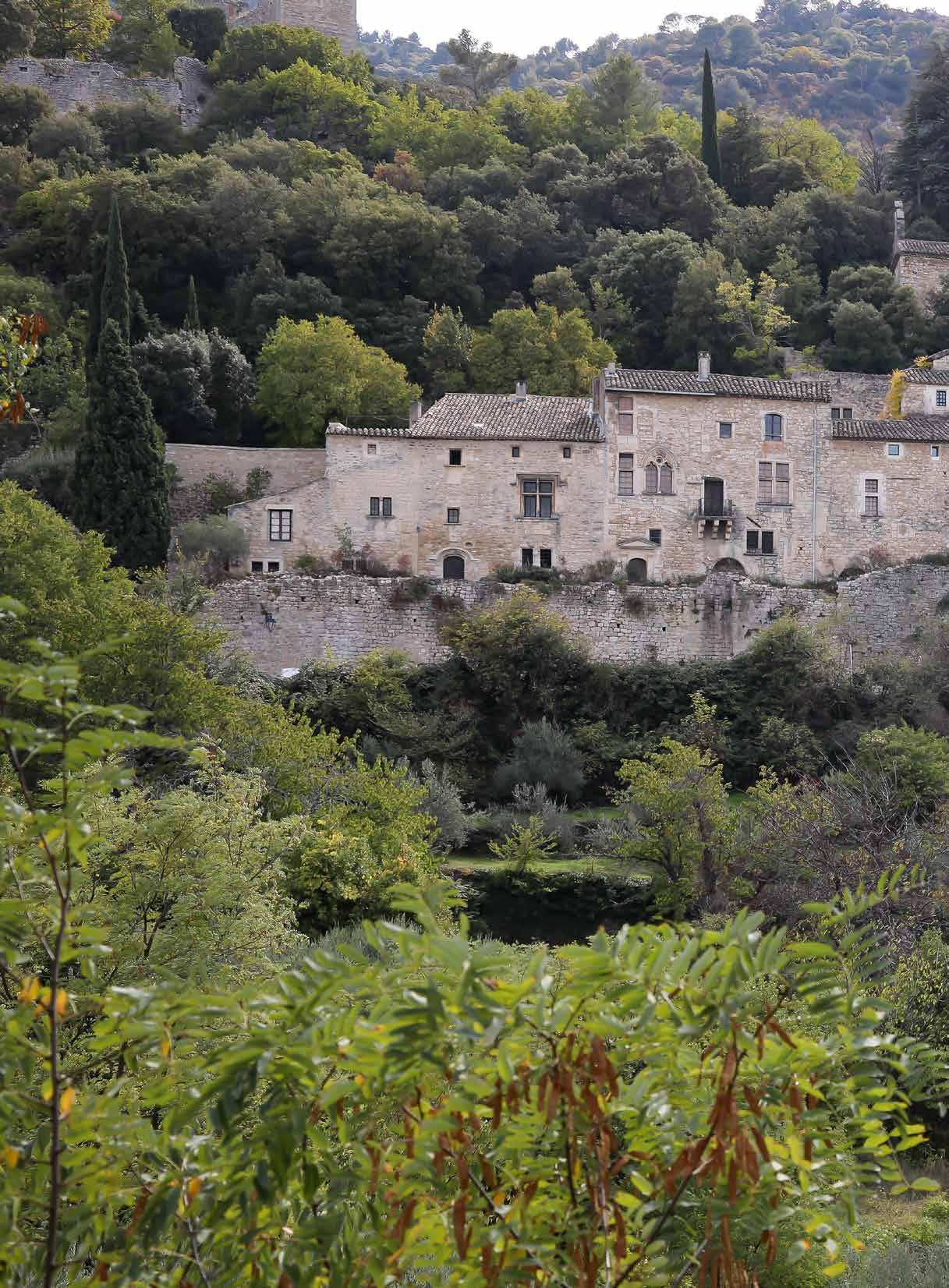

SHOP
L’Atelier des Cendres
Along the path from the carpark to the village you will pass a small pottery studio and shop, Les Cendres (The Ashes) where Denis Bouniard creates ceramic vessels and his wife, Olivia Tregaut, sculpts ceramic animals. Their creations are varied and lovely. I came away with a charming pitcher glazed pale periwinkle.
Address: 24, Rue Sainte-Cécile
Market day is Saturday. It is a rather large, sprawling market (the largest in the Luberon) and spread among several streets. There is sometimes live music and several shops to poke. Wander through town to soak up Apt’s lively atmosphere.
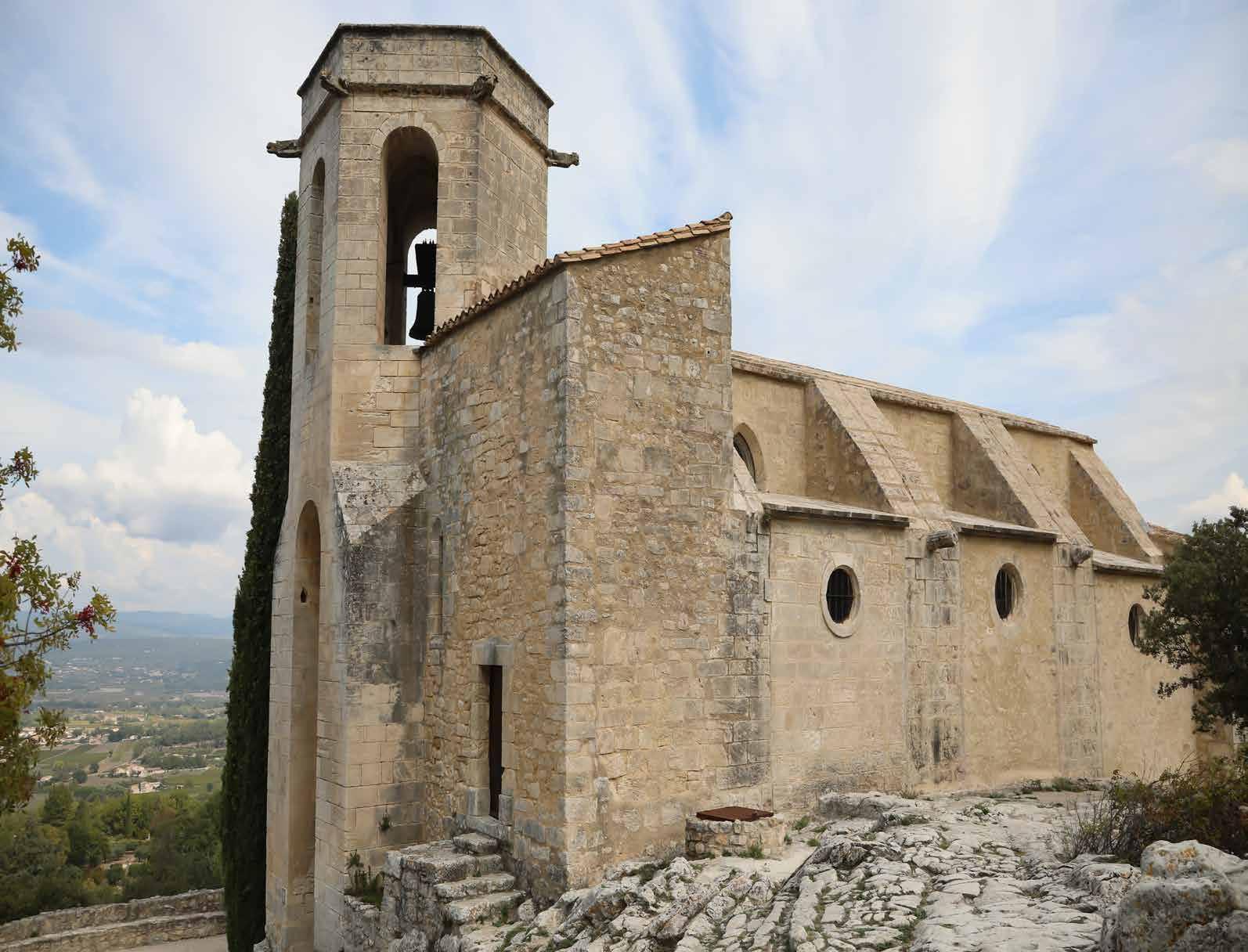



MÉNERBES

The hilltop village of Ménerbes was firmly planted on the map when British expat, Peter Mayle, famously published his bestselling book, “A Year in Provence,” which drew crowds for many years. The village has returned to relative peace, and overlooks vineyards and cherry orchards. Zigzagging on foot up the hill through the village is a nice way to spend the afternoon, admiring the 16th and 17th century architecture and poking into the few restaurants and shops. Picasso bought his mistress, Dora Maar, a house in the village in the 1940’s. She was an artist and photographer who spent summers here.
Following her death, American arts patron, Nancy Brown Negley, purchased the home and renovated it to create a residency for writers, academics and artists. The home can be visited during exhibitions, as well as guided tours.
Market day is Thursday.
STAY
La Bastide de Marie
Set in a vineyard in the valley below Ménerbes, this very charming and authentic boutique hotel is part of the Maisons et Hôtels Sibuet collection, run by the Sibuet family. Each of the 15 rooms is unique and quite comfortable. The common guest areas are thoughtfully appointed with antiques, textiles and books, and the restaurant is outstanding. Bicycles are available to explore the countryside, or you can relax in the beautiful gardens. There are also two private villas available for larger groups or those wanting discretion.
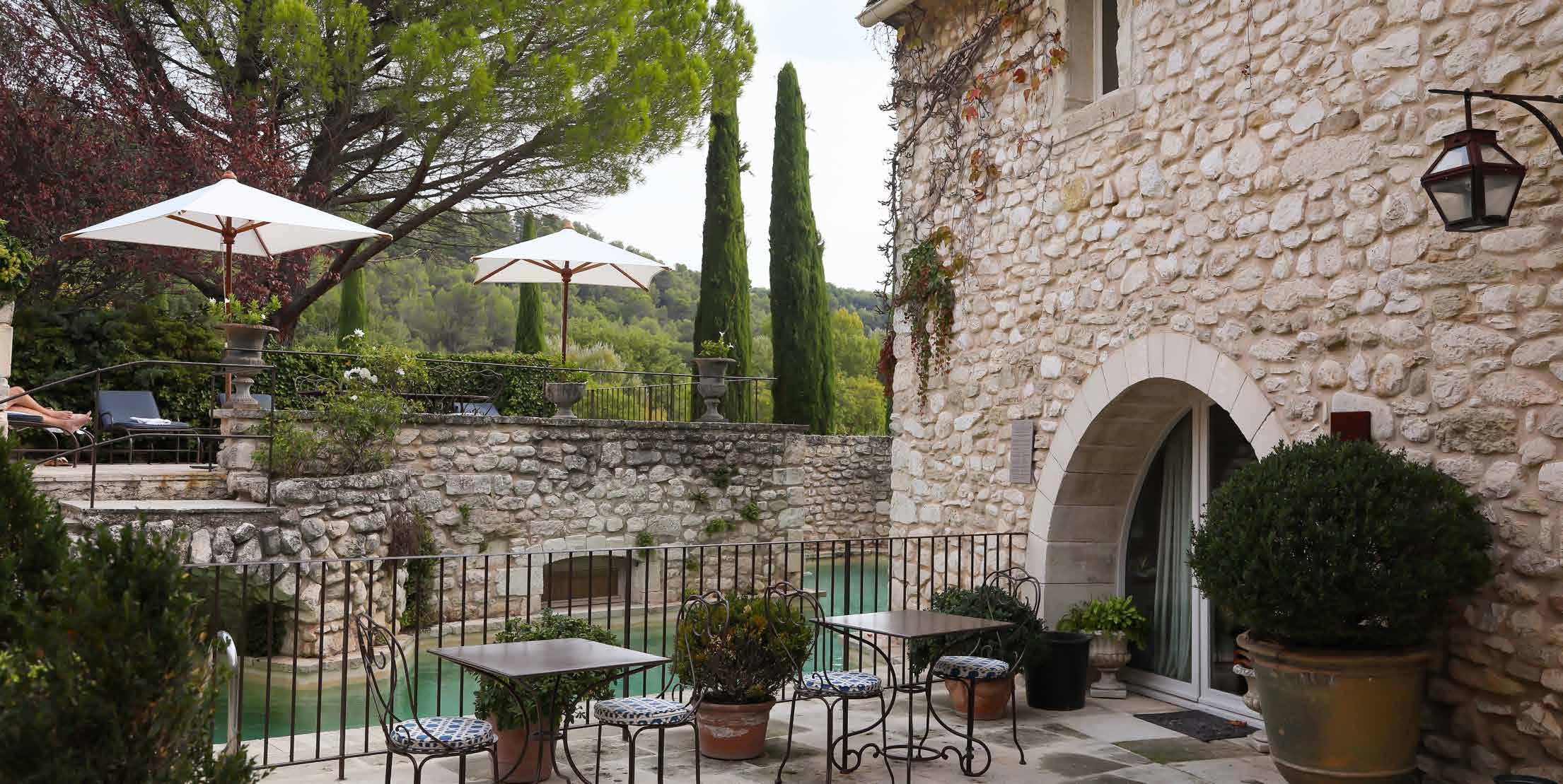
Adjacent to the hotel is the wine estate, Domaine de Marie, spread amid 57 acres. Here, a selection of red, white and rosé wines are produced, as well as olive oil. Guests can visit the cellar, taste wines and tour the winery, as well as send cases of wine home.
La Bastide de Marie



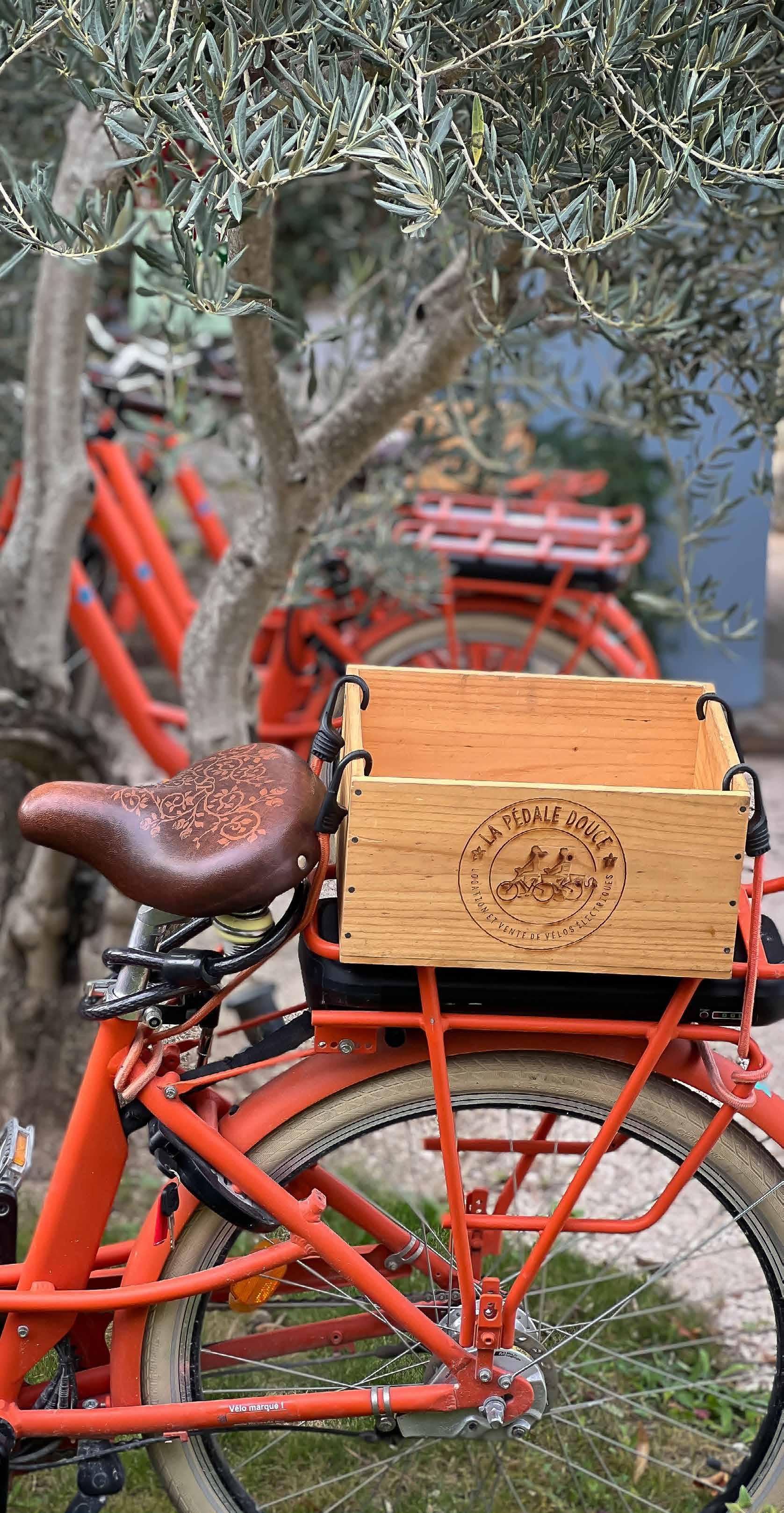
LACOSTE
The village of Lacoste is superbly located atop a hill, adjacent to limestone quarries, from which the village was built. 16th century homes and gardens line cobblestone paths and lead up to the château at the peak. This castle was occupied in the 18th century by the notorious Marquis de Sade, the depraved man who gave birth to the word “sadistic.” There, he committed salacious acts for years, while also bouncing in and out of various prisons and insane asylums. During and after that period, he wrote several highly obscene and disturbing manuscripts, plays and novels.
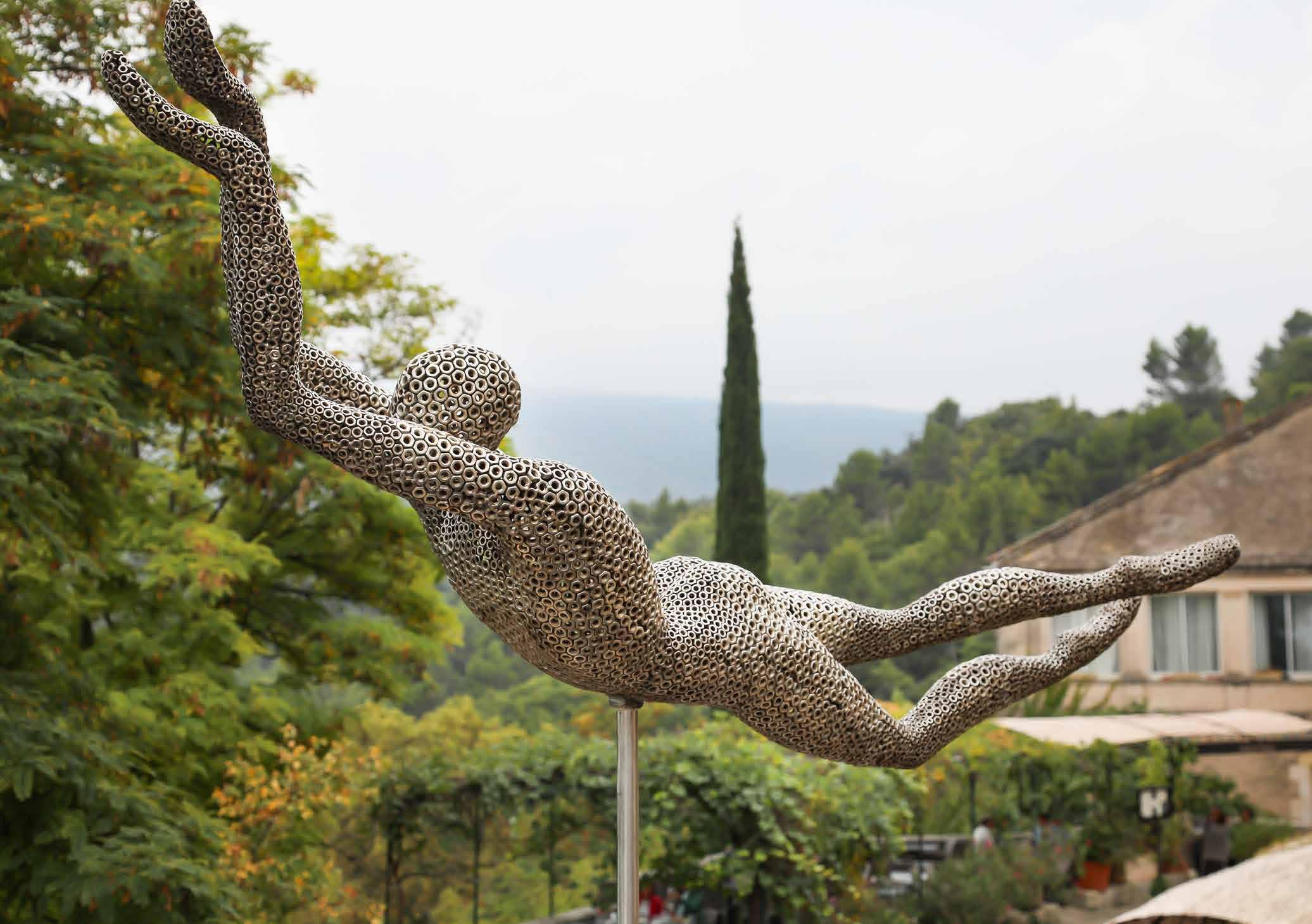
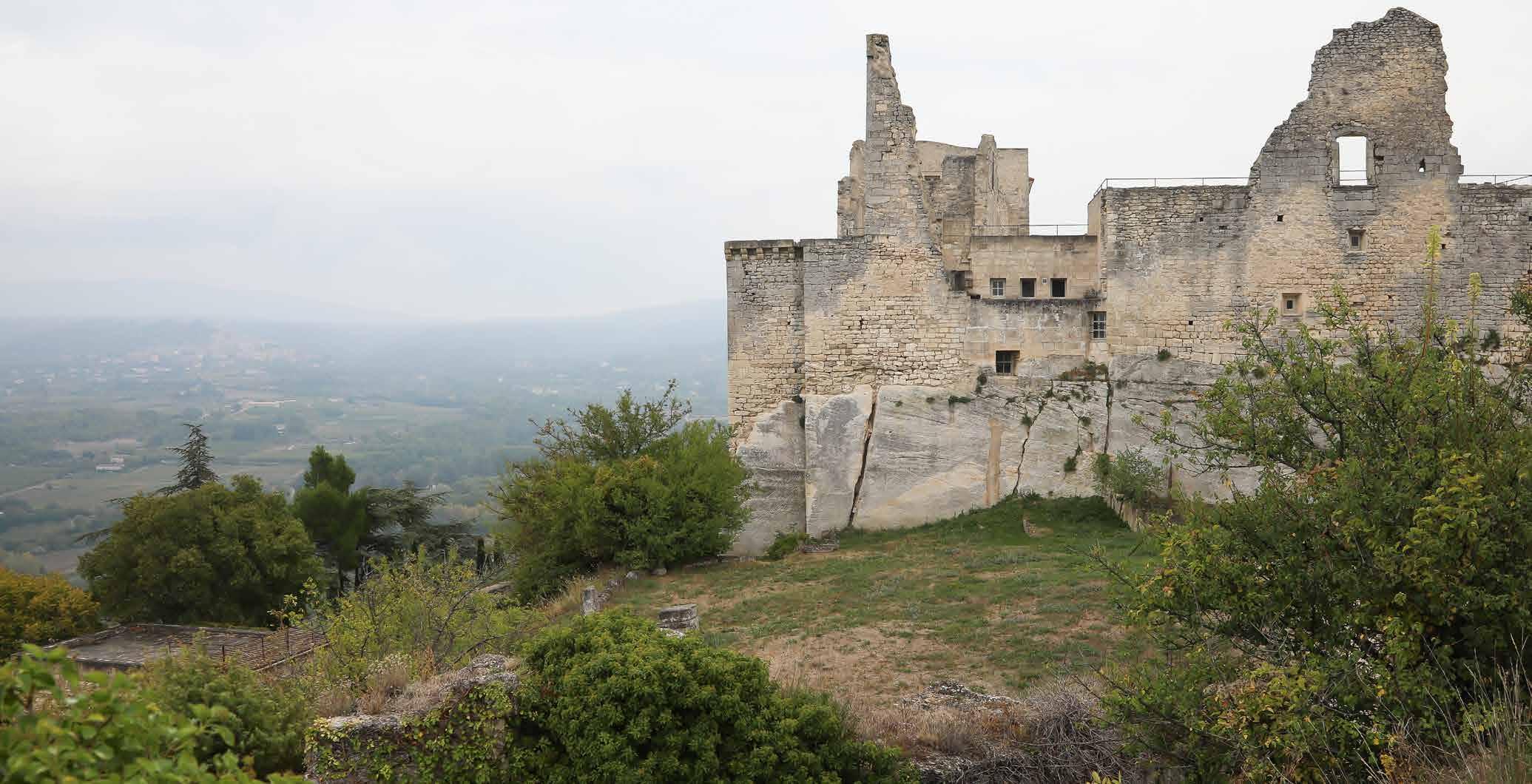
The château was much destroyed during the French Revolution, after which it sat empty and in ruins for a couple of centuries. In 2001, the château was purchased by Pierre Cardin, the renowned French couturier. He restored a portion of the castle and spent summers there, where he hosted the Festival de Lacoste, a series of concerts and operas in the courtyard as well at the quarry that came with the purchase of the castle. Upon his death in 2020, he bequeathed the castle to the Institut de France. It is open to visitors in the summer months.
Savannah College of the Art Design (SCAD) established a campus in Lacoste in 2002. The school occupies several of the buildings here for its study abroad students and its events, including workshops, exhibitions and a film festival in July. SCAD has notably renovated many of the village buildings and is recognized by UNESCO for its work in heritage conservation.


EAT

Café de France
This cafe, dating from the 19th century, sits part way up the hill on the pedestrian path. It is a lovely stop for coffee or lunch. Sit at a table on the hanging terrace and enjoy the grand panoramic view across the
In order to reach the villages on the south side of the Luberon mountain range, follow the road through the picturesque village of Bonnieux (be sure to stop and admire the views!). The journey takes you between the Petit Luberon and Grand Luberon, following the Aiguebrun river. The drive is scenic and full of diversions. Hiking trails branch off from the road. Follow the sign to the cedar forest, where cedars from the Atlas Mountains in Algeria were planted in the 1860’s and stand tall and proud. It is a wonderful place for a hike. Stop along the side of the main road at a tiny lavender distillery, where the sweet older man who operates it distills not only lavender, but other flowers as well. I bought essential immortelle water which, he promised, will give me a youthful complexion. After a series of twisting roads and hairpins, the road descends to the quaint village of Lourmarin, another of the most beautiful villages in France.
LOURMARIN
This enchanting village was an important stop along the route between Marseille and Apt from the 11th century onward. Unlike most of the villages in the region, Lourmarin is not at the top of a hill and is quite easily accessible, with plenty of parking.
The château on the highest point of the village was constructed as a fortress in the 12th century. After the French Revolution, the castle fell into ruins and was renovated in the 1920’s. It now operates as a trust to support young artists, and is well worth a visit.


EAT
Strolling through the village you will notice that café culture is thriving in Lourmarin, and dining along the picturesque street as the setting sun glows on the limestone buildings is memorable. Les Commissions du Moulin, a small grocery shop and purveyor of local gourmet food and wine, run by the Hotel du Moulin across the street. Pick up coffee and a cookie or lunch (a salad or sandwich) and a bottle of wine to take on a picnic. The shop also sells lovely, typical French pottery. Alternatively, enjoy dinner at Le Restaurant du Moulin across the street at the hotel, which has nice rooms, if you are looking to sleep in town.
Address:
Rue du Temple
Hotel du Moulin



Market day is Friday, and this is a wonderful one! Stalls are set up beneath


beneath the shady plane trees. There is also a farmer’s market on Tuesday evenings.

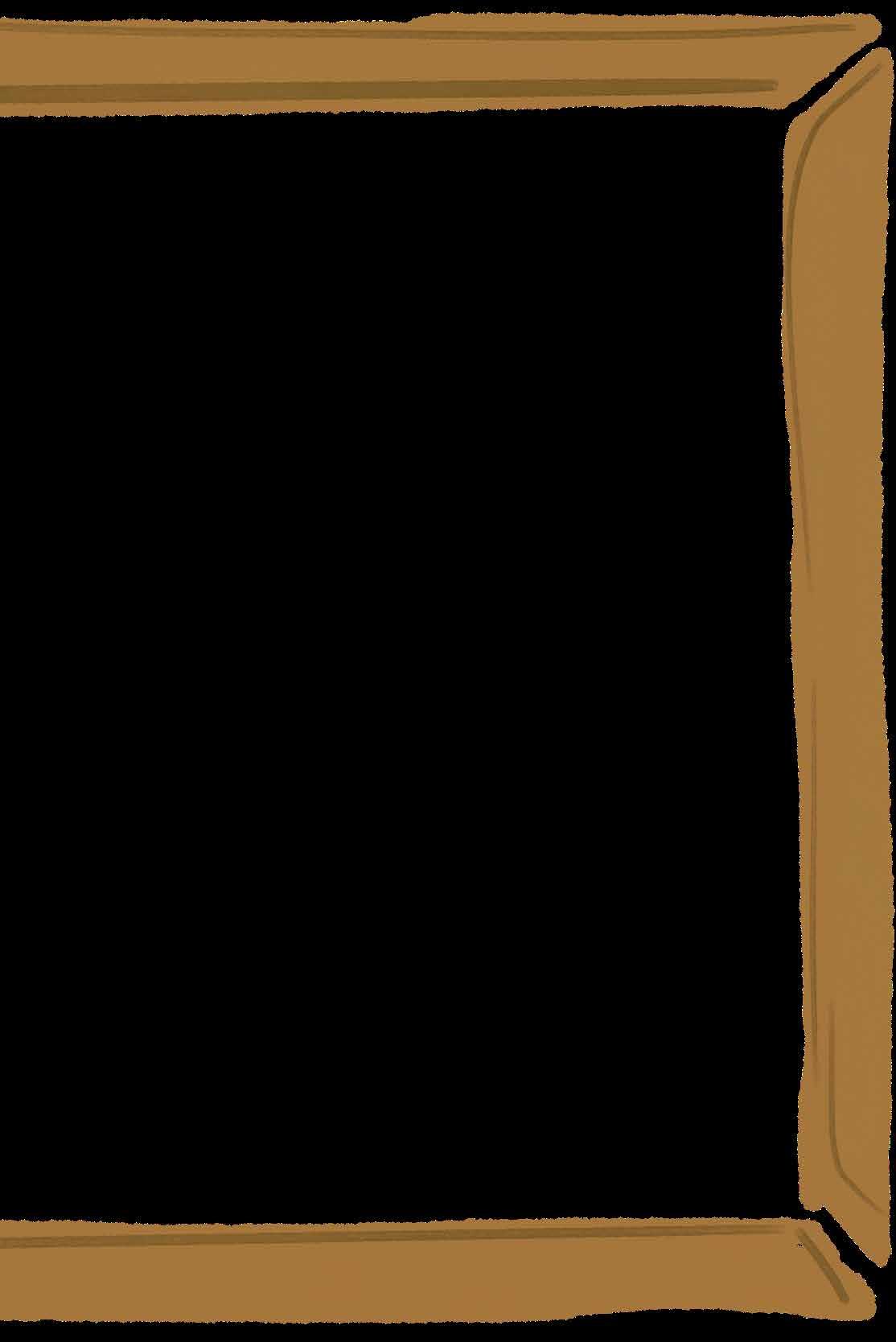
SHOP
La Boutique de l’Antiquaire


Owner Nathalie
Masset runs this very interesting shop, full of enticing antiques such as chandeliers, furniture, pottery, and linens. She is gifted with her sewing machine and makes chic tote bags with antique linens and bits of old leather straps. Hours of operation seem irregular – sometimes I’m fortunate to find the shop open and sometimes I drive to Lourmarin only to find it closed.
Address: 9 Rue de Grand Pré


Gris Piedra
Barcelona native, Laia Roig, stocks her very pretty boutique with stacks of woodblock-printed Indian blankets, tablecloths and cosmetic bags, kimono robes, silk scarves, fun jewelry, leather goods, antique French blouses, and much more. There is a very charming children’s version of the shop, Le Petit Gris Piedra, on a nearby lane, which carries adorable baby clothes, shoes and toys.

Address:
5, Ave Philippe Gerard
8, Rue de Temple
Gris Piedra
De Nada Intérieurs
This tiny shop carries a lovely assortment of ceramics, textiles, baskets and decor. The owner is kind and helpful.

Address:
9 Rue de Grand Pré
De Nada Interiéurs
Atelier Buisson-Kessler
Vibrantly hued, locally made ceramics.
Address:
14, Rue de la Juiverie
Atelier Buisson-Kessler





CUCURON
The picturesque medieval village of Cucuron is built around a huge spring-fed pool, known as a bassin. Massive 200-year-old plane trees line both lengths and provide leafy shade and beauty. The village has been a set for a couple of films, including A Good Year (starring Russell Crowe and Marion Cotillard). There are a few restaurants, cafés and a bar where you can relax and observe the animated scene before you, particularly on market day.
EAT
La Petite Maison
This Michelin-starred restaurant in an old yellow house serves market-fresh Provençal cruising in the charming dining room, which is clad in old-fashioned wood work and tapestries. The chef, trained at Le Cordon Bleu, has a loyal following. He even teaches cooking classes on Saturdays!
Address: Place de l’Etang
La Petite Maison
Market day is Tuesday. This is one of my favorite markets to visit. The setting is wonderful, as the market surrounds the pool in the center of town.
ANSOUIS

This exquisite hilltop village, listed among the Most Beautiful Villages in France, is pure charm, and a favorite of mine. Tourists are sparse in this living village. A saunter along the perfectly picturesque lanes, past 15th century houses covered in vines and roses, and poking into the few sweet shops, is a lovely way to spend a few hours. There are several plaques with black and white photographs explaining the history of Ansouis.
At the top of the village there is a beautifully preserved château, originally built as a fortress in the 10th century and rebuilt in the 12th or 13th century. It is open to visitors on set days and only by guided tour (in French). The village mayor’s family owned the château for about 1,000 years. The handsome 13th century Church, St-Martin d’Ansouis, retains much of its charming, decorative interior painting. Across the church is a hall which sometimes hosts art exhibitions.

EAT
Patisserie Volpert
The wonderful variety of pastries in this patisserie are decadent and elaborate, beyond what you would expect in a small village. Gelato is served as well, and an attached garden with tables.

Address: Place Saint-Elzear
Patisserie Volpert
La Closerie
Situated in the former post office, this modern, creative Michelin-rated restaurant serves imaginative, artfully presented cuisine. Chef Olivier is an artist in the kitchen and the service is meticulous. I savored a fabulous lunch, including chestnut cappuccino and mushroom soup, mushroom pot pie in a phyllo pastry
“pot” and the most divine layered fig dessert. La Closerie is a treasure!
Address: Boulevard des Platanes La Closerie

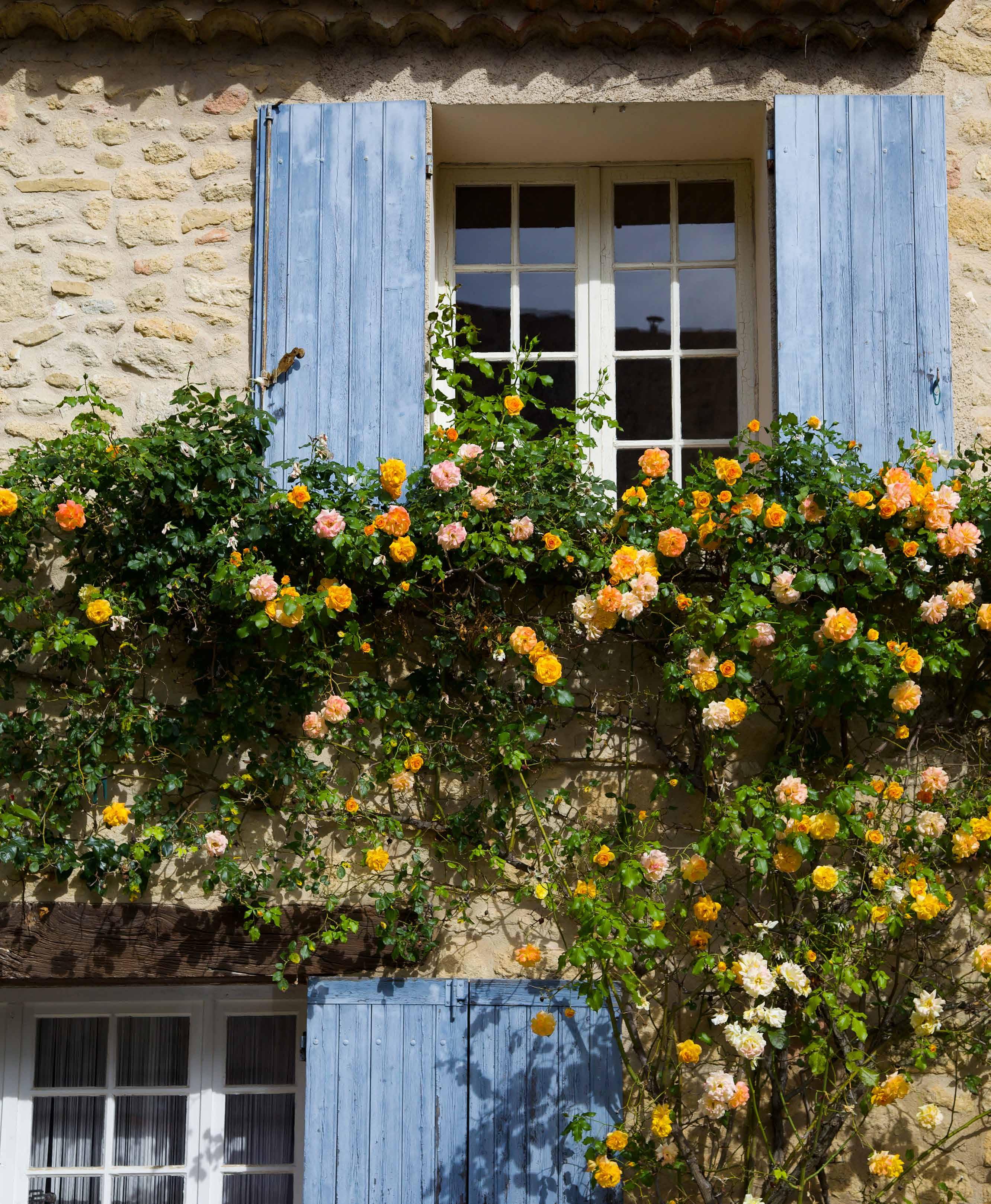






Le Grain de Sel
Hearty Provençal comfort food is made with love at this bistrot/wine bar. Relish the simple, but flavorful, dishes such as wild boar. Sit on the terrace for lunch or on a warm evening to enjoy the sunset and beautiful views across the valley


L’Art Glacier
Down the road from Ansouis, this ice cream café boasts an expansive terrace with pretty valley views. A host of rather flamboyant sundaes are topped with vibrant fruit, paper flowers, butterflies, birds, sails, dragons, “fireworks” and more. They offer more than 50 flavors of ice cream and sorbet. Tables can be reserved ahead of time, which is recommended since, on a warm day, the line for a table can be quite long.
Address:
Grande Rue
Le Grain de Sel
Address:
767, Chemin de Hautes
Terres (get there by car, as it is a bit outside the village)
L’Art Glacier
SHOP
Galerie Juliet S.
Australian painter and ceramic artist, Juliet Schlunke, has an unorthodox background. Originally hailing from Sydney, Schlunke has spent the past 50+ years in Europe. She has a storied career as an artist, going from painting nudes and portraits to painting silk fabric and trompe l’oeil, then designing prints for the top French design houses and designs for Limoges porcelain.
Address:
17A Boulevard des Platanes
Galerie Juliet S.
Since settling in the Luberon 25 years ago, Schlunke’s work has been inspired by the beautiful fruit, vegetables and landscapes found in the idyllic Provençal countryside. She sculpts exquisite bulbs of garlic, onions, artichokes and more, as well as dishware. Her paintings include luscious figs, grapes, pomegranates and trees.
Green Utopie
Chloé makes a large range of natural soap in a multitude of intriguing scents in her smalll shop.
Address:
10 Rue du Cartel
Green Utopie



The beautiful hilltop village of Ansouis, surrounded by vineyards and olive groves.

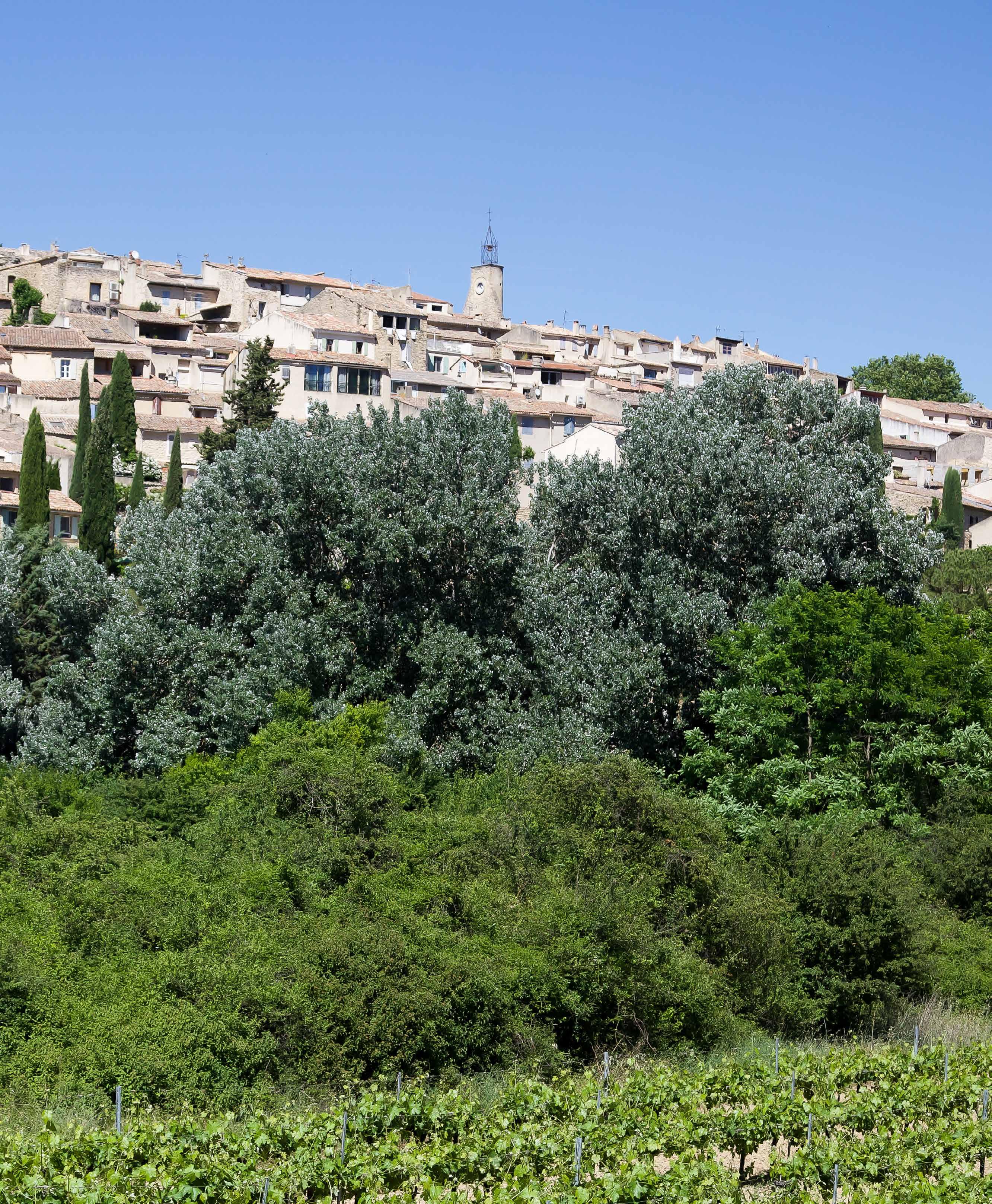


STAY
There are no hotels in Ansouis, but there are holiday homes to rent among the vineyards in the valley, and just a few residences to stay in the historic village itself.

Maison Venisso
Jean Louis rents two apartments in the heart of the village. He knows the residents and is extremely helpful and responsive to guests. We stayed in one of them and very much enjoyed the local experience of waking up to the birds in this most peaceful and unforgettable village.
Address: 10 Rue du Cartel
Maison Venisso
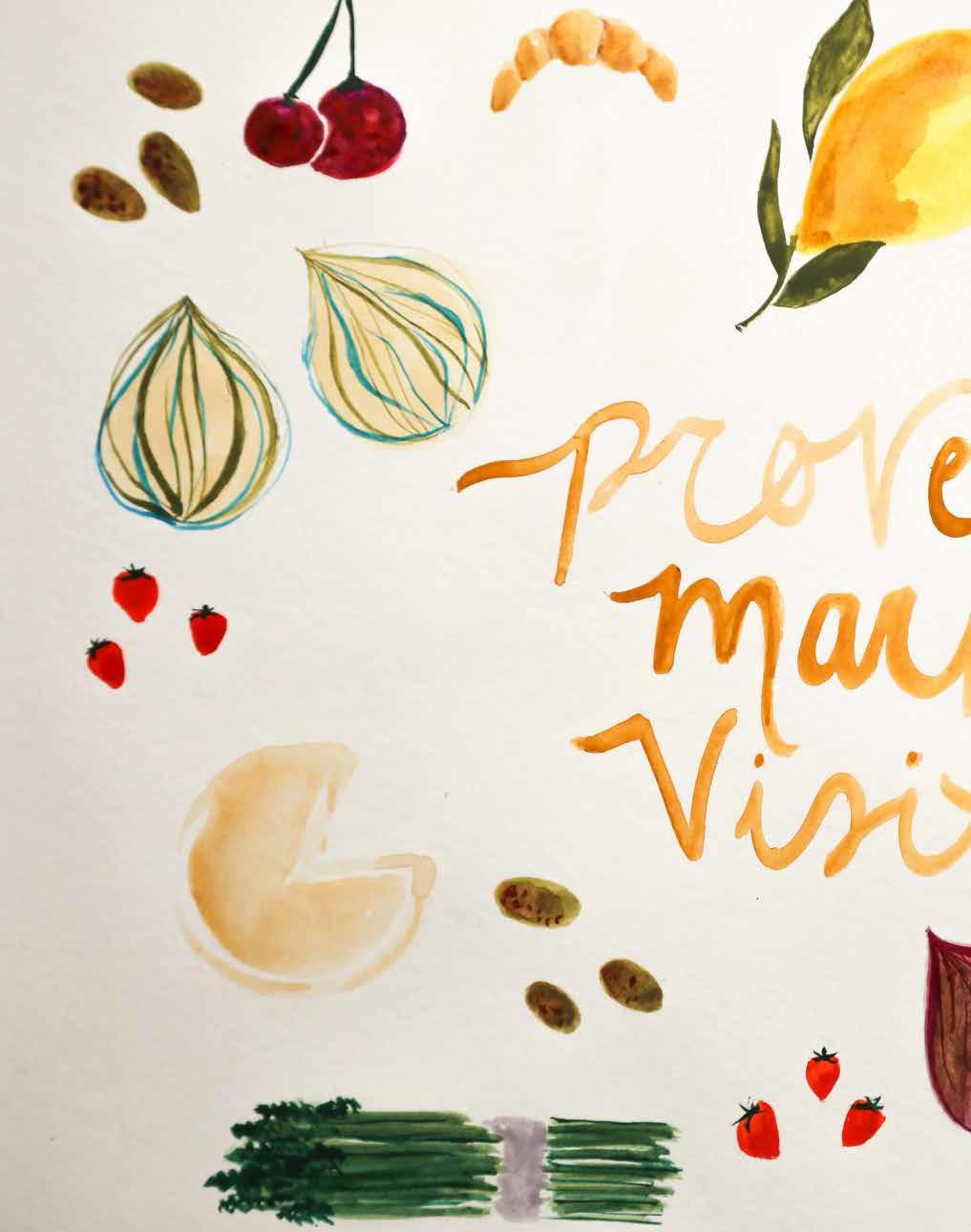

Browsing the markets throughout the Luberon and an absolute must when visiting Provence.. concoctions, such as artisan sausages and breads, local honey, homemade nougat and and counters of various stalls. You can load assemble a charcuterie board. From hand woven culinary knives and chopping boards, to table clothing and on and on, you will find it at a market. day of the week, so check online


Luberon is a pleasurable way to spend mornings
Provence.. A myriad of edible delights and cheese, olives, farm fresh produce, spices, other local products, are piled on tabletops load up on goodies to take on a picnic or to woven willow baskets and wooden French table linens, art, handcrafted soaps, ceramics, market. You have your pick of markets every online to plan your market schedule.






























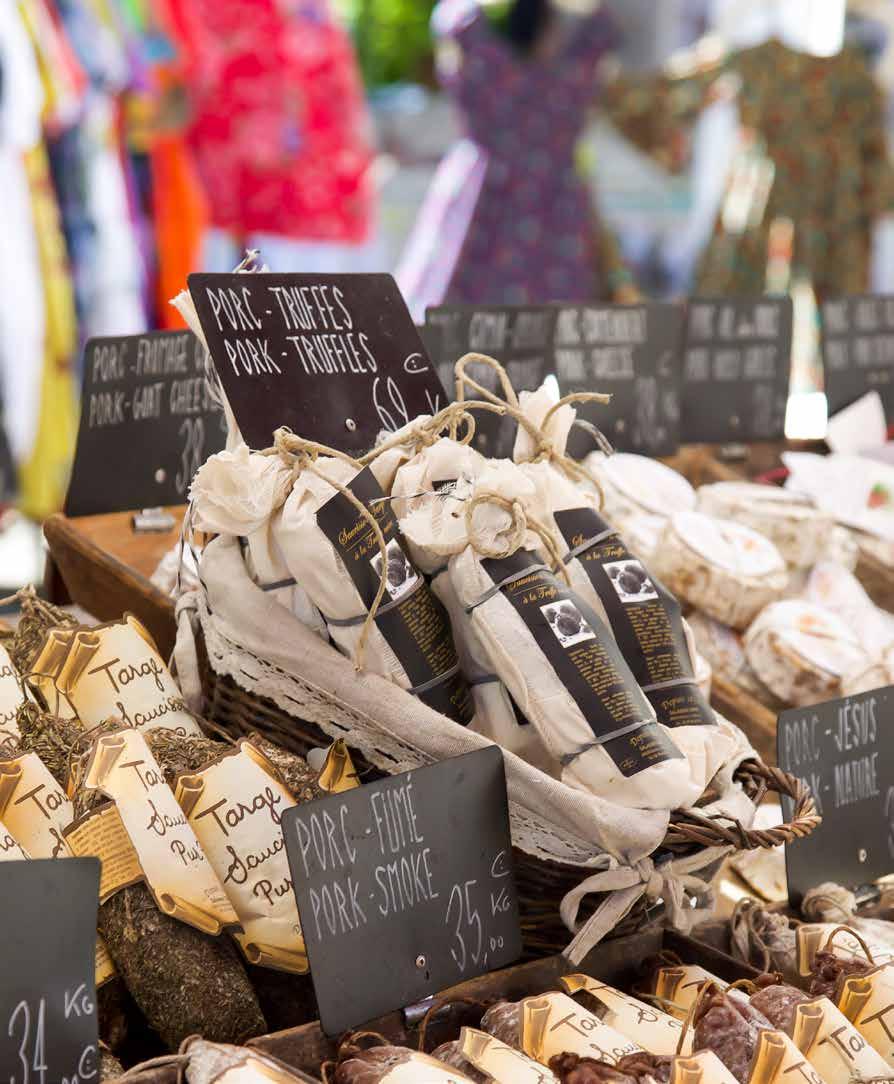

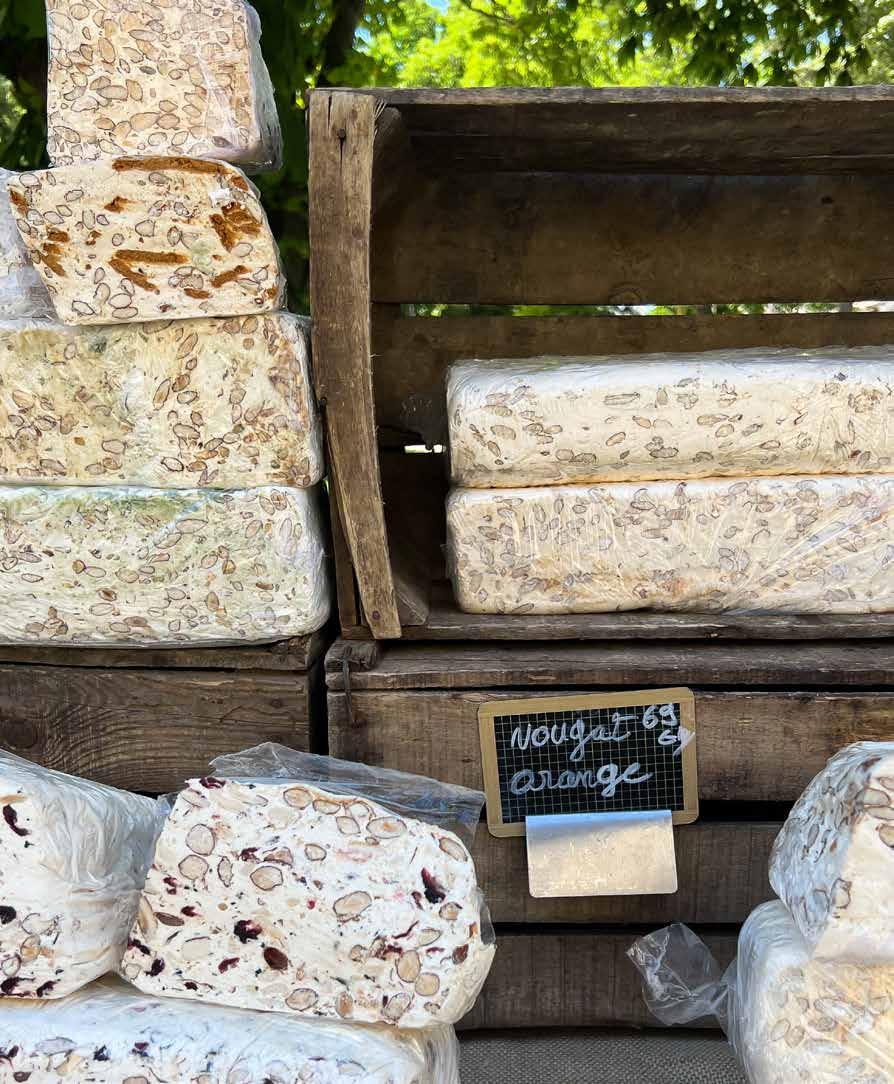
INSPIRED BY NATURE


INSPIRED NATURE


The beautiful village of Roussillon stands apart from the other villages in the Luberon because it sits on land streaked with russet red, mustard and apricot. And all the homes and buildings in the village glow in these same brilliant hues. A geologic phenomenon formed this land, full of ochre. Standing on the edge of the village, on a cliff, one can look out upon the first ochre quarries in the area, which were carved out 2,000 years ago. Roussillon is the world capital of ochre!
Ochre has been used in the decorative arts for thousands of years. During prehistoric times, people used it to make cave paintings. The Egyptians used ochre to decorate tombs. Artists during the Renaissance used ochre to paint frescoes. It is even used in body art by ethnic tribes in Africa.



Jean Etienne Astier, a native of Roussillon, discovered in 1780 that processing ochre resulted in a non-toxic dye. Thus began the industrial production of ochre. Did you know that the pigment from ochre was used to make stucco, which sheathes many Provençal homes, due to its sun and heat-resistant qualities? Hence, the reason we associate the villages of Provence with these warm sunset colors. As the industry died out, the ochre quarries were left abandoned.
Artists have long been drawn to the region to use extracted ochre pigments in their art. One can often find an artist set up somewhere in the village plein air painting. A small shop in town sells paint pigments in a multitude of hues, made from the ochre earth.

Nature lovers are delighted to know that there is an unusual collection of flora and fauna growing in this small area that thrives in the ochre-rich soil, including 26 varieties of wild orchids, which don’t grow elsewhere in Provence!
Gazing at this unique landscape, one can almost imagine oneself standing in a landscape painting created by nature. Shades of rich earthy red, rosy pink, bronzed orange and golden yellow contrast with the azure blue sky and rich verdant green of the oak and pine trees… a glorious color palette indeed, plucked right from the terrain of Roussillon







Domaine Les Martins IN THE WORKSHOP WITH REGIS PÉAN AND DAVID VARON ON THE ART OF HOSPITALITY



I drove out of Paris in the early morning, the congested streets and tops of buildings disappearing in the rearview mirror. As I drove south through France, I passed towns and villages, cutting across green hills and vineyards. I stopped in the beautiful village of Beaune, in Burgundy, for a spell, where I stretched my legs by going for a wander. Back on the highway, I still
later in the week. When I saw him at breakfast the next morning, I raved about the restaurant and how much I enjoyed it. He replied that it’s one of their favorites, but he hadn’t wanted to send me there with expectations – he wanted me to discover it on my own. Set amongst olive trees, jasmine, lavender and tranquil gardens, Domaine les Martins is a beloved guesthouse, located in the “golden
had a long drive ahead, and I wanted to reach the Luberon valley before it was dark. What would I do about dinner? I hadn’t made a reservation because I was unsure when I would arrive, and I was feeling ravenous. When I finally pulled onto the gravel drive, it was nearly dusk. The scent of lavender in the evening air greeted me, followed by my host, Régis Péan, who offered to carry my luggage. As he led me to my suite, he mentioned he had made a reservation for me at Le Mas, a family-run Michelin restaurant up the road. “I knew you would have a long day’s drive and would arrive tired and hungry,” he said. I was touched by such a thoughtful and generous gesture. And what a splendid meal it was, so much so that I made another reservation for
triangle” between the historic villages of Gordes, Ménerbes and Lacoste. I have had the pleasure of staying here twice and, on both occasions, I have enjoyed extraordinary service, above and beyond what I normally experience during my frequent travels around the world.
What sets Domaine les Martins apart from other fantastic B & B’s and boutique hotels is the level of personalized service. The proprietors, Regis Péan and David Varon, have certainly mastered the art of hospitality. I was curious to learn more about their approach, and they were happy to take the time to chat with me. As we sat down in the garden alongside the roses, birdsong filled the warm afternoon air throughout the entirety of our conversation. Domaine les Martins is indeed a slice of heaven.

AN INTERESTING BACKGROUND
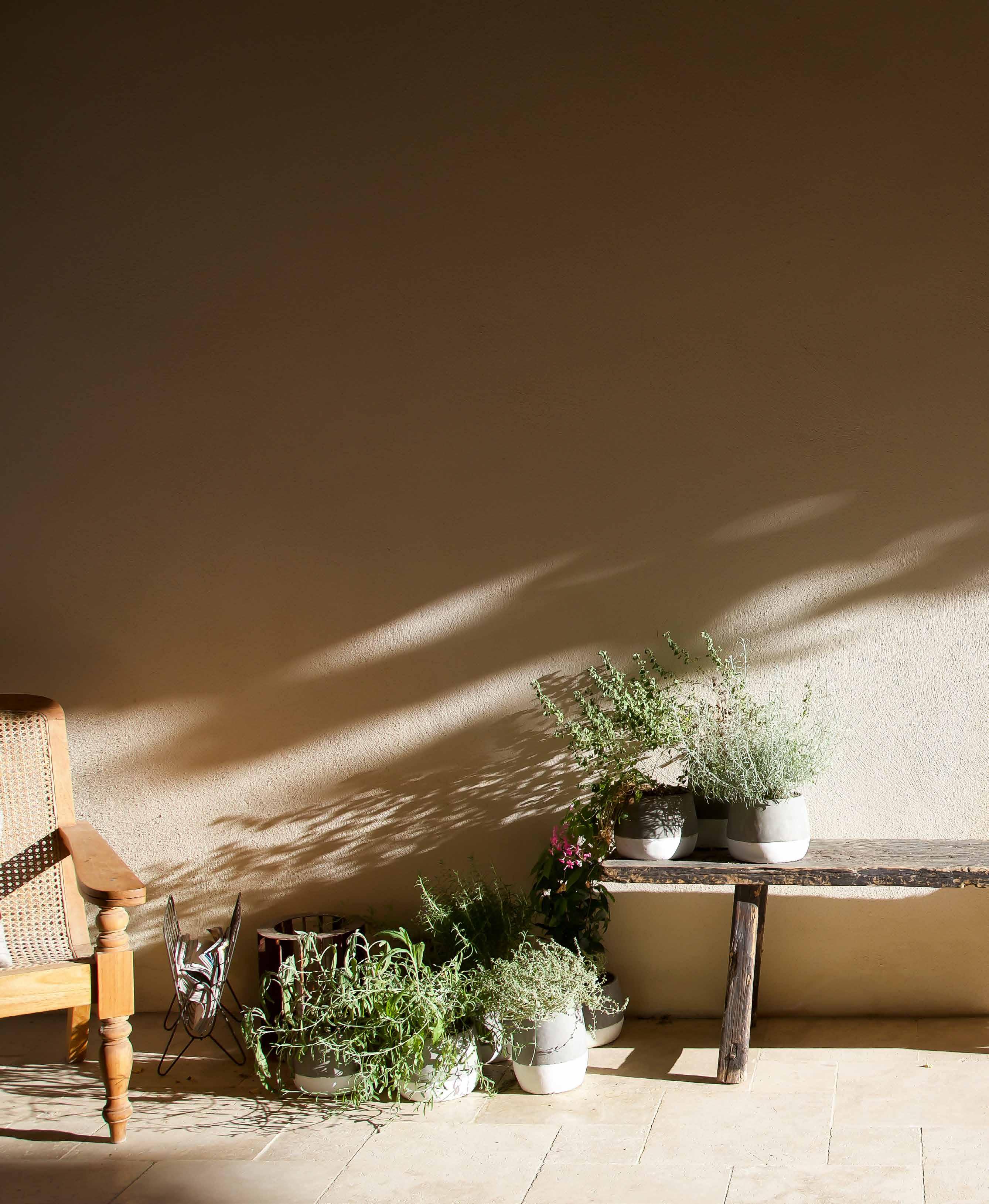
Péan, from Vienna, and Varon, from Turkey, met and lived in New York City for 20 years. Varon had a career in fashion, running a company that licensed celebrity brands, where he was involved in creating, producing and distributing approximately 25 brands at any given time. His company was one of the pioneers in that field. A trained architect, Péan launched his career in New York at Peter Marino Architecture, which became THE institution for retail architecture. Before long he was headhunted for director of store design for MAC Cosmetics, which had just acquired by Estee Lauder in 1999. The brand was hot and wanted to expand internationally, so he was placed in the role of taking the brand to 65 countries, including opening 1300 stores in only 6 years. “It was crazy and creatively demanding,” recalls Péan. “I created concepts which I rolled out and adapted in many
different countries and cultures. Trying to understand the different customers and the psychology behind customer behavior in each country and market was very interesting. We always needed to find ways to surprise our customers.” He eventually went out on his own, doing retail branding with a plethora of other clients and companies. “I had Interesting clients who had heard of my past and wanted to dig into that retail experience, as there were few people who were really specialized in that. I was developing the stores, the concept, the entire consumer experience, really diving into understanding how someone shops, how someone sees the product and how it is presented. I translated the complete brand idea into a threedimensional experience. I ended up teaching this at the Pratt Institute in Brooklyn.”

Both men travelled extensively for work. When they had free time, they took great pleasure in entertaining. Their apartment in the city was a hub for their friends, a place they hosted dinner parties and holiday gatherings. They also owned a beach house on Fire Island, where everyone in their social circle always came to stay on weekends.
“Most of our friends liked to come to our house because we loved inviting people over and creating big gatherings around the dinner table. We loved hosting.”
Out of those experiences came the idea of doing it professionally. Varon and Péan came to a point in life where they questioned if what they were doing was still on track with their expectations and life goals.

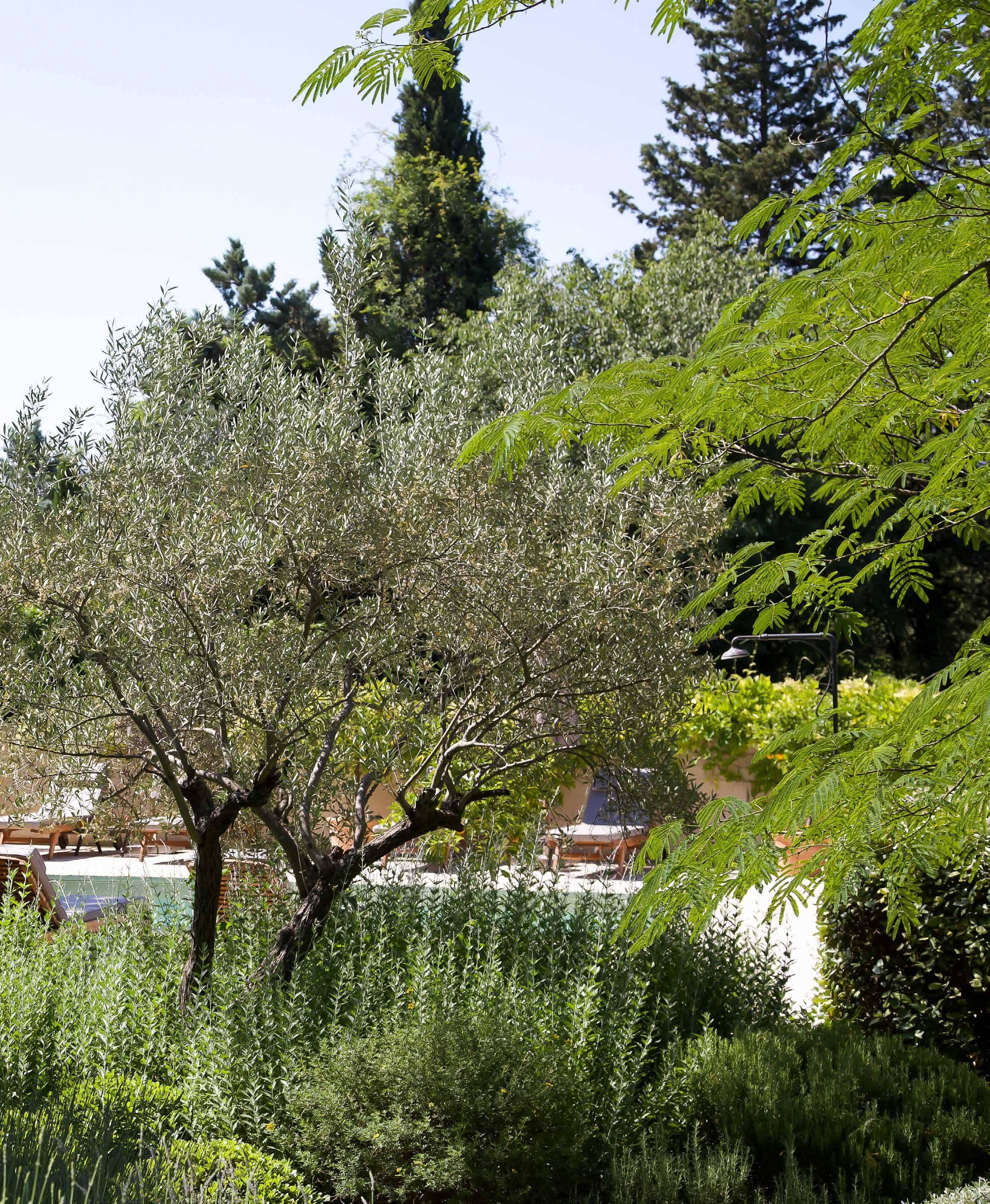
WHY DID YOU CHOOSE TO LEAVE NEW YORK AND OPEN A GUEST HOUSE?
Varon: “I really loved what I was doing and enjoyed my job. I didn’t think I was ready to move on or make any changes but, when you think that everything is going ok, life often has surprises for you. I developed a health problem.
From our discussions, we decided life had become just work. And, even though I enjoyed what I was doing, it didn’t leave us much time for anything else. At that point, we decided to make changes to our lives, and we considered moving somewhere else to explore a new opportunity.”
Early on, and because they have family in Europe, they thought they might return someday. They considered finding a little house and taking a break for 6 months to a year to reflect on what they might do next.
Péan suggested Varon go to Europe for a couple of weeks to see if there was a place they might like. So off he went. To France.
They knew they did not want to end up in a big city in Europe. There was no point in exchanging life in New York for another metropolis. They did not want another stressful life, having to start from scratch. They decided that, if they were going to make a change, it should be a drastic change, something completely new and adventurous. But they were concerned the countryside might not offer many opportunities for their background; not having a network in the fashion or architecture industries meant they needed to come up with something new and interesting.
Varon had attended college in France. Returning awakened his love for the country. He reflected, “Every weekend our Fire Island
beach house was full of our friends. They would make fun of us, saying, ‘You’re going to be that old couple that runs a B & B for retirement.’ That joke started resonating with us.”
Péan: “When David was is Europe looking at real estate, he realized we could afford a larger house. He said, ‘I can draft a business plan and maybe we can make this idea work.’ We thought, ‘Ooh, this could be an interesting life proposal, way apart from what we’ve been doing, but it could be so much fun to actually do what we do in private on weekends, having people over, and doing it every day, and actually make a living from it. This could be so much fun!’ David started putting numbers together and we felt we could make it happen. The search became more focused.
WHY THE LUBERON?
They landed in the Luberon purely by coincidence. Varon had scoured the entire southern French coast from Biarritz to Monaco. At one point, friends asked them, “Have you been to the Luberon?” to which they replied, “The Luber-what?” Their friends told them they really ought to check out the region, pointing out that quite a number of Parisians spend time there, it’s very international and social. Furthermore, it’s really beautiful and special, as the region is a protected natural park.
Subsequently, they drove up to the Luberon from Nice for a visit. Péan recalls, “One night under a huge full moon, it hit me that this place is beautiful! It’s perfect!” They explored and started to fall in the love with the area. They made several return visits. One day, Varon picked up Péan in Avignon, upon his arrival from New York, upon which he declared, “I feel like I’m coming home.”




The location is ideal and accessible via the TGV (high speed train) from Paris in a mere 2 hours and 40 minutes, or by plane at Marseille and Nice airports. The three main hubs in France tourists tend to visit are Paris, the Côtes d’Azur and Provence. The Luberon is known as the Coeur de la Provence (heart of Provence).
TELL ME ABOUT THE PROPERTY WHEN YOU FOUND IT
Péan: “When we found it, after two years of searching, it was a private home in derelict condition. At that point the occupants were only using the actual house. All the other rooms and buildings were sitting empty for 20 years. There was a mangled concrete tennis court from the 70‘s and a broken swimming pool. Shutters were hanging off windows, the façade consisted of broken tiles and half-destroyed stucco, and the plumbing and sewage was in complete disrepair.” Renovation took 9-1/2 months.
IS IT CONSIDERED A BED & BREAKFAST OR A BOUTIQUE HOTEL?
Péan: “It is a hybrid, a guest house, because we have our private home and our guests have their own rooms separated among several buildings, which are linked together. So, it is officially one structure, but with privacy for us and for our guests. We want it to be a very personalized experience where we can hang out and have dinner together, which we do in the summer. But if you don’t care for that, it can be like a hotel where it is very private, you are on your own and we never see you. So, you can have both.”
There are 7 units, including 3 fully equipped apartments (with kitchens, dining and living rooms), 3 suites with living areas and 1 bedroom. The property includes beautifully landscaped grounds and gardens with various seating areas for relaxing, poolside lounging, a fire to gather around and a pétanque court.
MANY HOTELS OFFER WONDERFUL SERVICE. WHAT SETS DOMAINES LES MARTINS APART?
Péan: “We want an upscale experience. A lot of guest houses we know are very mediocre. We can’t compete with 5-star hotels because there is no fitness room or spa, and we don’t have staff,
other than a housekeeper. But what is real luxury? Totally personalized service which, truthfully, has fallen off the wagon. In the last 20 years everything has become selfserve, self-do, self-everything. If you want luxury you want to be pampered. You want someone who remembers your name, takes you by the hand & does everything for you.
“We want to provide a guest experience that makes you feel like you’ll be taken care of. We want to help you make the most of your stay, like we would do if we had friends come. If we have friends visit for the first time, we want them to have the BEST experience. We will the show them the BEST restaurants. We will guide them where to go and the top things to do, in our opinion. We share our knowledge in the hopes that our guests have the best experience possible. I don’t think that even a 5-star hotel has this ambition at their heart. There may be a concierge who can sort out an itinerary for you to see, go and do, and restaurants to enjoy, but I don’t think they truly aim that you have the most amazing experience the way we really want you to have that. “Our aim is for you to have this experience where you feel you are really being pampered. We share this old Provençal structure and try to make it as comfortable and luxurious as we can, with our means and vision.


From the moment you arrive until the moment you depart, you can decide how much you want to be involved with us. The more you get involved with us the better the experience we can create for you. We treat you as if you were our friends, even if we don’t know you.
Our guiding principle is How would we make the experience for a friend or for our family? Our approach is never strategic in hopes for a good review. The leading question is, how can we make this friend feel good in our home? We ask ourselves, what can we do for tonight, how can we make it great and what can we do to surprise them? It’s the way we do things.”
WHAT MAKE AN IDEAL GUEST? WHAT DO YOU APPRECIATE IN A GUEST?
Varon: “Have an open mind. Be open to take some guidance. If a guest comes for 3 days, that is a very short time, and they simply can’t do everything. Be open to the idea of perhaps experiencing a slow pace of life, rather than run around to all the villages. Maybe see a few towns, then take time to slow down and enjoy the
property. They don’t need to see everything.”
Péan: “We have ideas they may not necessarily come up with. For example, we have guests who we help organize a picnic in the lavender fields and they return and exclaim “It was the most amazing day!”
WHAT SERVES AS YOUR INSPIRATION?
Varon: “We were both lucky that our former lives allowed us to travel tremendously and we were paid enough to stay in the best, most luxurious hotels. We travel often during the offseason when we are closed, and we have a critical eye.
We always know what is missing, what isn’t easy for us and how it could be better. We have tried to translate that knowledge into this venture on a small scale. Of course, we can’t compete with the big hotels, but what we’re missing when we stay at other hotels, we’ve tried to complete here.”
In a region that draws artists who paint the picturesque Provençal landscapes, Péan and Varon have become masters of their own craft: Painting experiences and memories for their guests.

Long after my stay at Domaine les Martins I daydream about my enchanting experience in the Luberon. I recall the sun shining on the honey-colored villages, the fragrance of jasmine wafting through the air in the evening, the taste of an amazing meal on my tongue, the sound of birds chattering and the warm breeze blowing my hair as I drive along a country lane past fields of lavender. I remember the comforting feeling of returning “home” to Domaine les Martins each day, to these convivial hosts, who truly care that my experience in this beautiful pocket of Provence is unforgettable.
Discover more about domaine les martins

Website: domainelesmartins.com
Instagram: @domainelesmartins




BRING IT HOME


HOME


Vintage Art
I happened upon these small oil paintings at an antique shop in L’Isle sur la Sorgue. Antique shops and markets are fantastic places to find lovely vintage art pieces at reasonable prices. And they are easy to tuck into your carry-on luggage. I can’t wait to find a home for these in a kitchen I design!

A Handwoven Willow Basket
I met Loïz at the market in Apt. His stall was laden with a selection of beautifully hand woven willow baskets. He explained that he and his father, Nicolas, weave baskets together. His father has been doing it for 40 years! They grow 50 different types of willow. Of course, I simply needed one! I purchased one I thought would fit into my luggage (and I would fill it with clothing, etc). Loïz said it takes a day to weave one like mine. A useful, handmade item like this is a wonderful keepsake of Provence to bring home! You can find Loïz every Saturday at the market in Apt.


Petite fleur
Jill Barber
Rêverie, L. 68

Claude Debussy, Alain Planès
Little French Song
Carla Bruni
Le temps du lilas
Barbara
L’ame des poetes
Charles Trenet
La fuite
Alexander Tharaud, Albin de la Simone
L’ombre at al lumiere
Coralie Clement
Des croissants de soliel
Emilie-Claire Barlow
J’Attendrai
Jean Sablon

They Say It’s Spring
BLOSSOM DEARIE
Les yeux ouvertrs
Emilie-Claire Barlow
L’amour est en bouguet de violettes
Luis Mariano
Listen to the playlist on Spotify
WHAT’S BREWING



Rose and Lavender Mélange
After the warming, spicier teas I enjoy in winter, I am longing for the light herbal and floral flavors of springtime. For this hand-blended infusion, I ordered organic dried lemon balm, rose petals and lavender flowers from my favorite herbal source, Mountain Rose Herbs.
I created an infusion that strikes a pleasing balance between the sweet rose, with its uplifting and relaxing qualities, and the distinct lavender flowers, which have a calming effect. The lemon balm is the base which is mildly flavored and imbues a sense of calm and balances mood.
Instructions:
3 parts dried lemon balm
2 parts dried pink rose petals


1 part dried lavender flowers



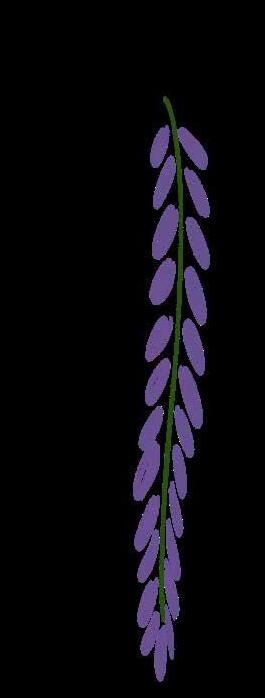
Combine and add 1 Tbsp to a tea diffuser. Pour 8 ounces boiling water over and let steep for 3 minutes. Stir in a very small spoonful of manuka honey to add a hint of earthiness to the tea.
If you are interested in blending your own tea, you can purchase these small lined tea bags in which to store the blend. To make enough tea to fill a bag, I combine 1 cup of lemon balm, 2/3 cup rose petals and 1/3 cup lavender flowers. Alternatively, you can store in a glass jar and store away from sunlight.




taste this

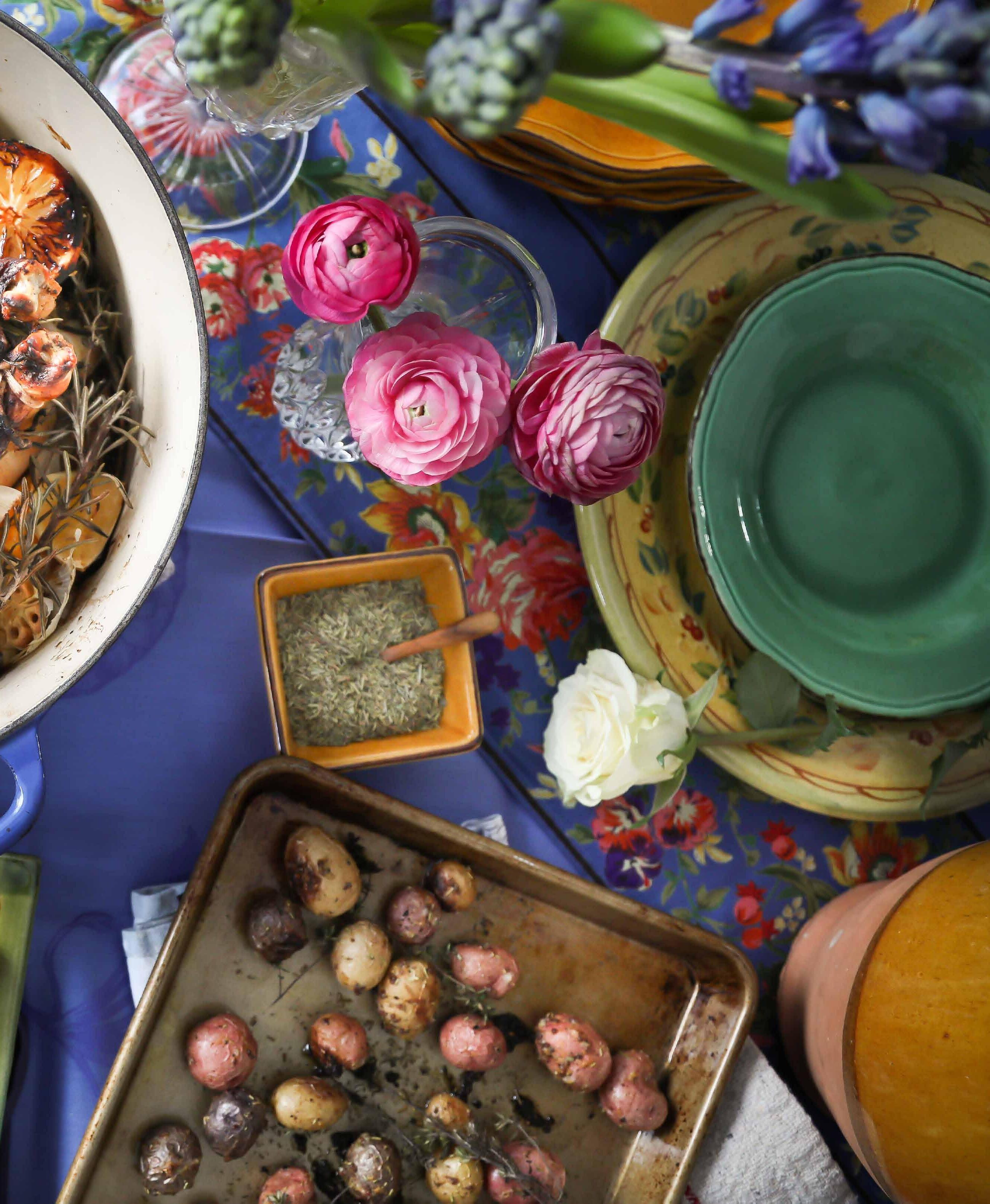
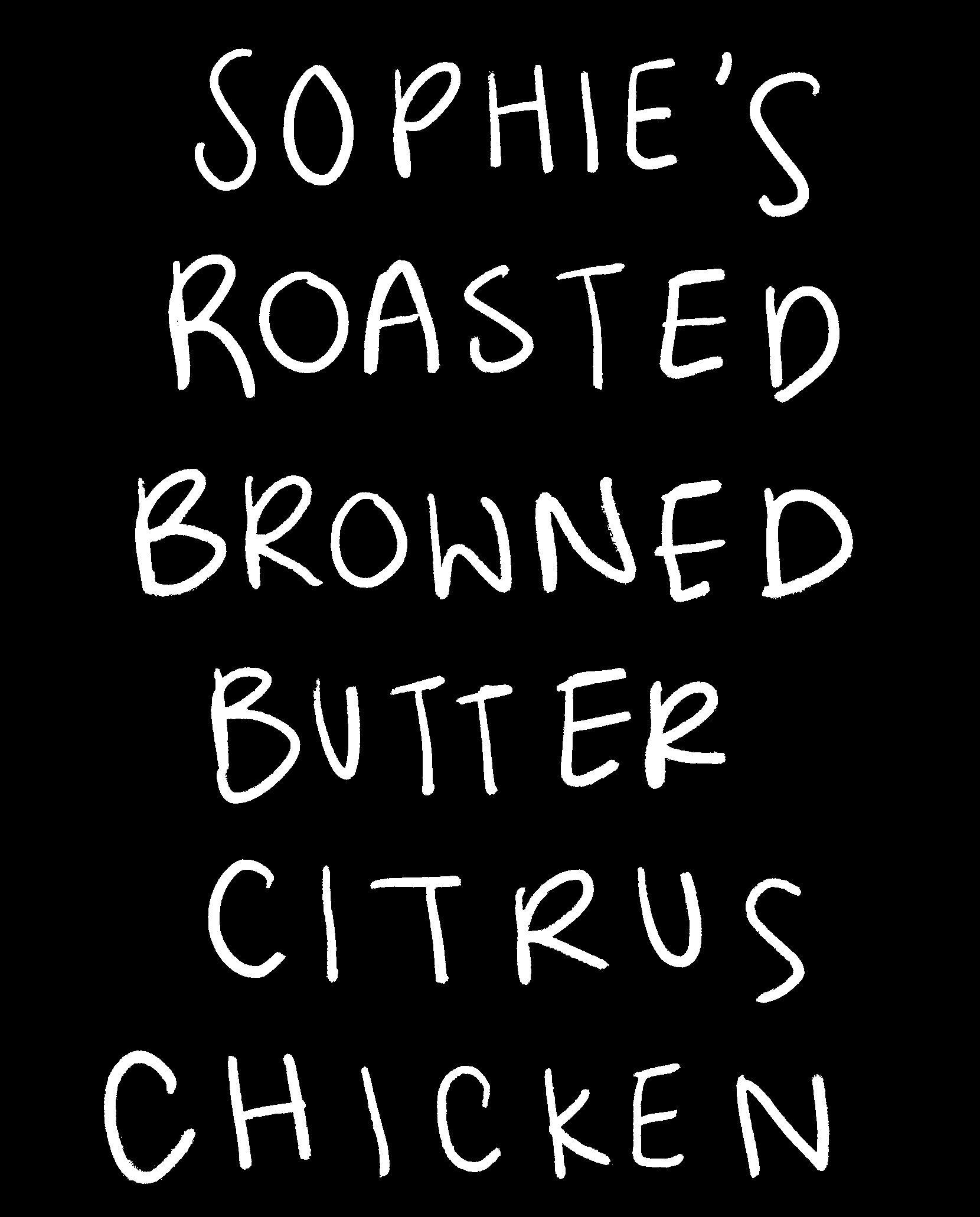
ROASTED CHICKEN
4-5 lb whole roasting chicken
1 large onion, quartered
3-4 shallots, halved lengthwise
2 bulbs garlic, cut in half crosswise
2 lemons
1 orange
1 bunch rosemary

1 bunch thyme
HERB CITRUS BUTTER
2 sticks unsalted butter, softened (I love the European butters such as Kerry Gold or President)
Zest from 1 of the lemons
Zest from 1 orange
1 Tbsp minced fresh rosemary
1 Tbsp minced fresh thyme
1 tsp dried herbs de Provence
1 tsp finely ground sea salt
1 Tbsp honey
BROWNED BUTTER
1 stick unsalted butter

HERB CITRUS BUTTER
With a fork, mix 2 sticks of butter, zest from lemon fresh and dried herbs, salt and honey until well Adjust flavors, if desired. This is so delicious, you’ll to eat it by the spoonful! Set aside 2/3 for the the remaining 1/3 to serve with baguette, if desired.
BROWNED BUTTER

In a small pot on medium heat, stir 1 stick of butter to prevent burning, until is is fragrant and the color hazelnuts. Remove from heat and set aside.
ROASTED CHICKEN
Grease a medium to large cast iron pot with olive Pat chicken dry with paper towels and place in cavity of the bird with some of the onion, shallots, orange and sprigs of herbs.
Massage 2/3 of the herb butter into the skin of Arrange the remainder of the onion, garlic, lemon, herbs around the bird. Sprinkle salt and pepper
Bake, with lid, 45 minutes. Then remove the lid another 15-25 minutes, until juices run clear when knife. Voilà! Carve and serve.
lemon and orange, well combined. you’ll be tempted chicken and save desired.
Note: The remaining bits in the pan and the carcass are just too good to be wasted. Make them into a bone broth to save for a soup later. Add carcass back to pan, add ½ cup apple cider vinegar, an additional quartered onion, and a teaspoon ground pepper and 1 Tbsp sea salt. Fill pan with water. Bring to a boil, then turn heat to simmer and cover with lid. Simmer all night and strain the broth the next morning. If not using right away, freeze the broth in quart size Mason jars.
butter constantly, color of olive oil. in the pot. Fill the shallots, garlic, lemon, of the bird. lemon, orange and pepper over all.
lid and roast when sliced with a
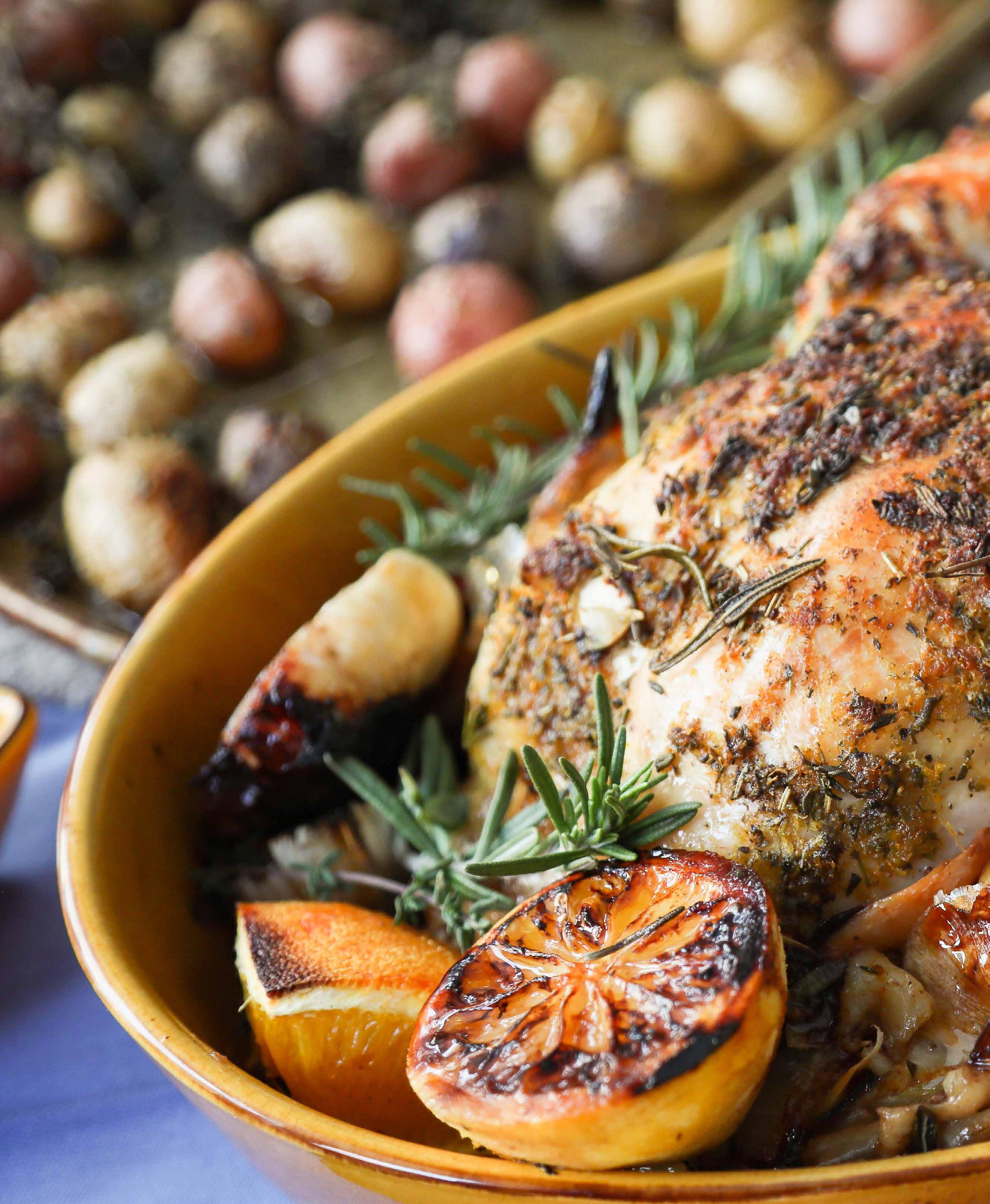

theloadedtrunk.com
 Concept by Jonna Robison
Concept by Jonna Robison
jonnarobison.com
Produced and designed by Sophie Robison
All photographs (except where noted) by The Loaded Trunk
























